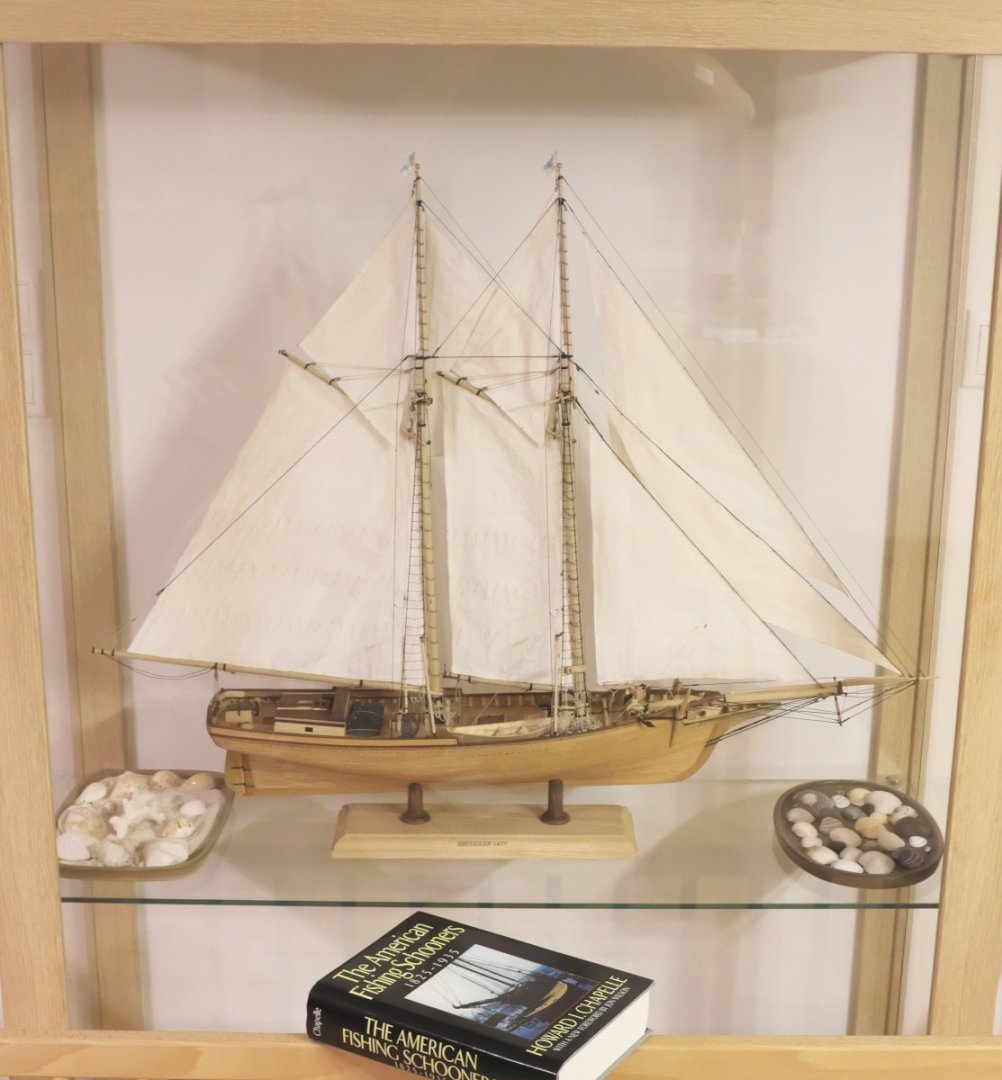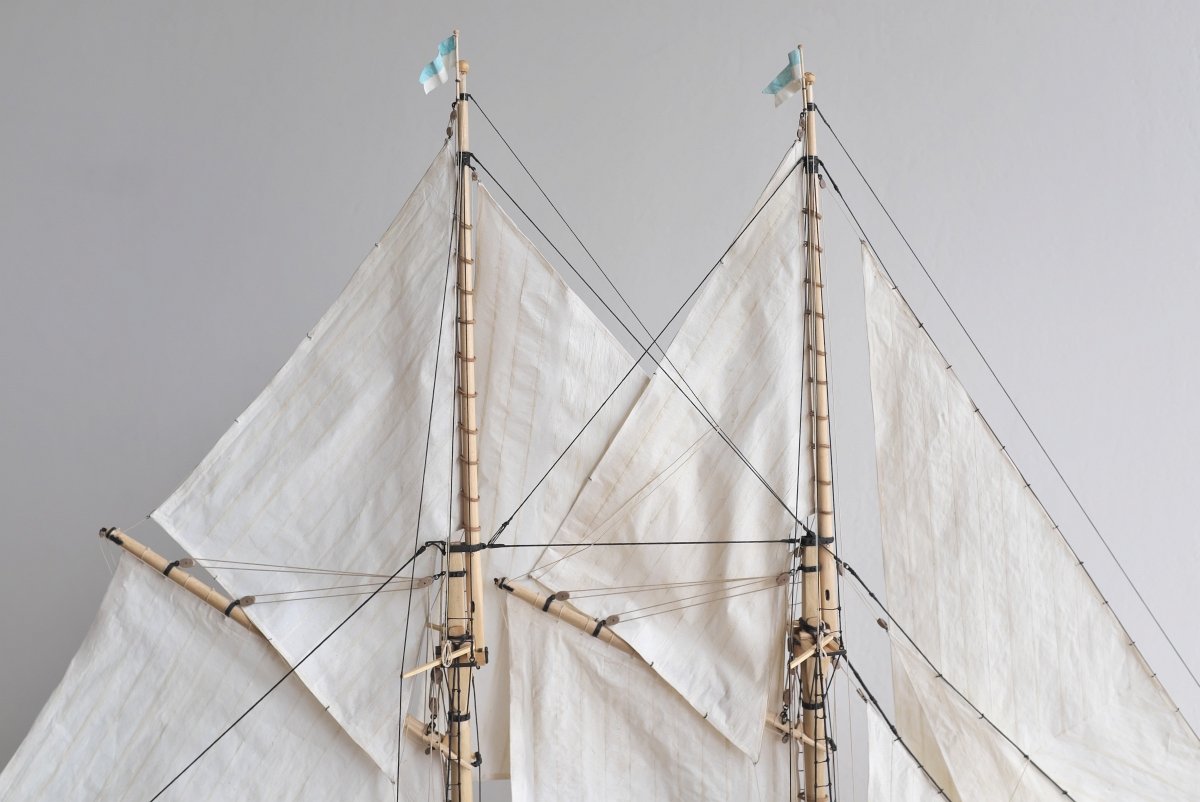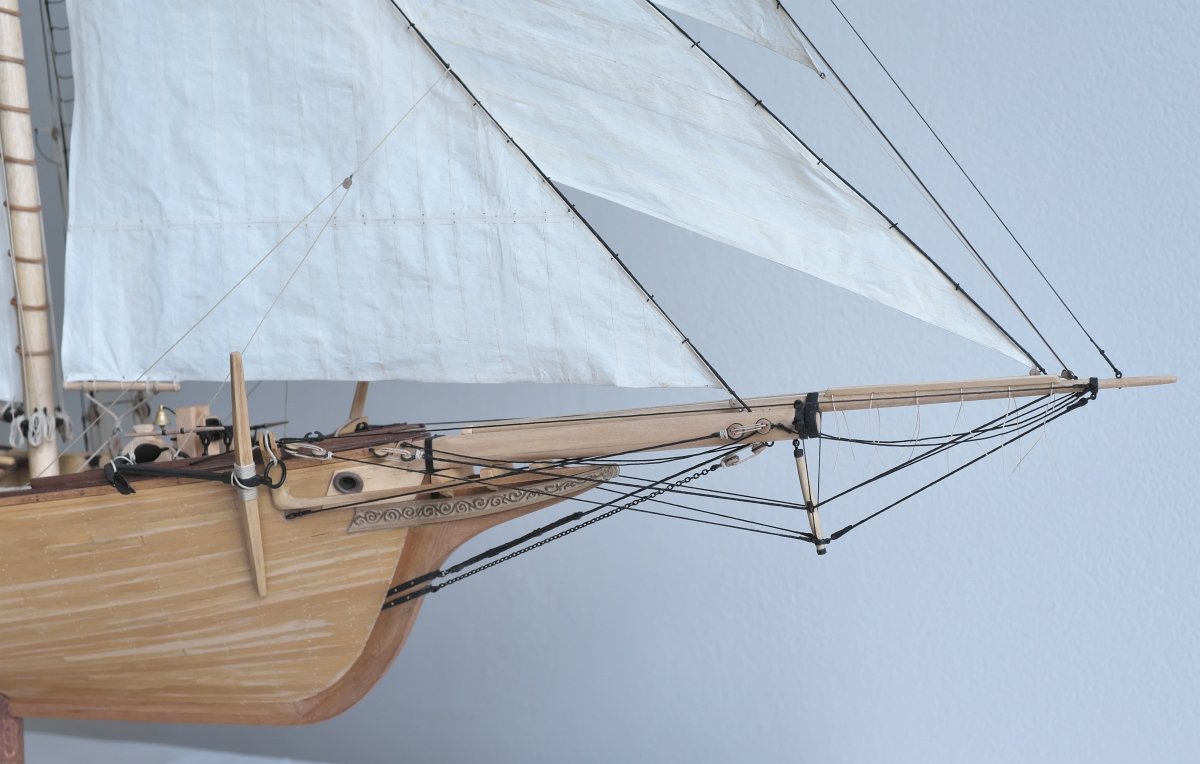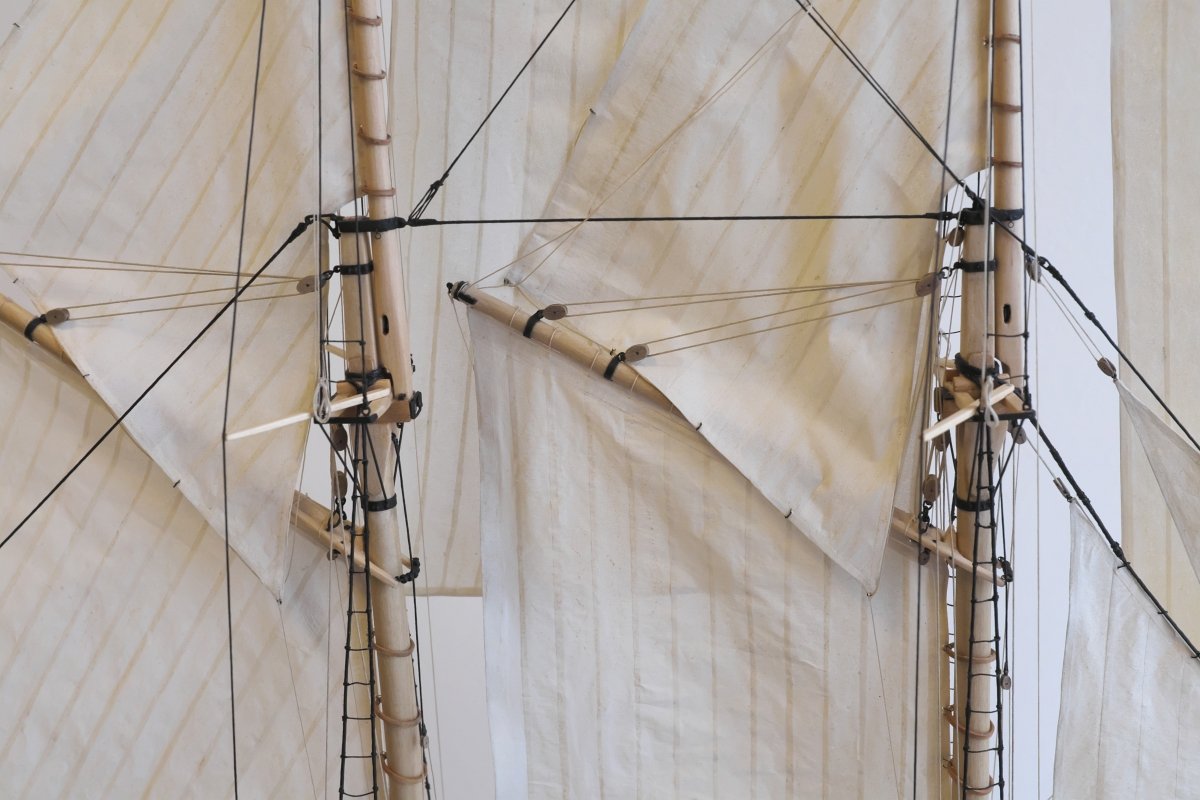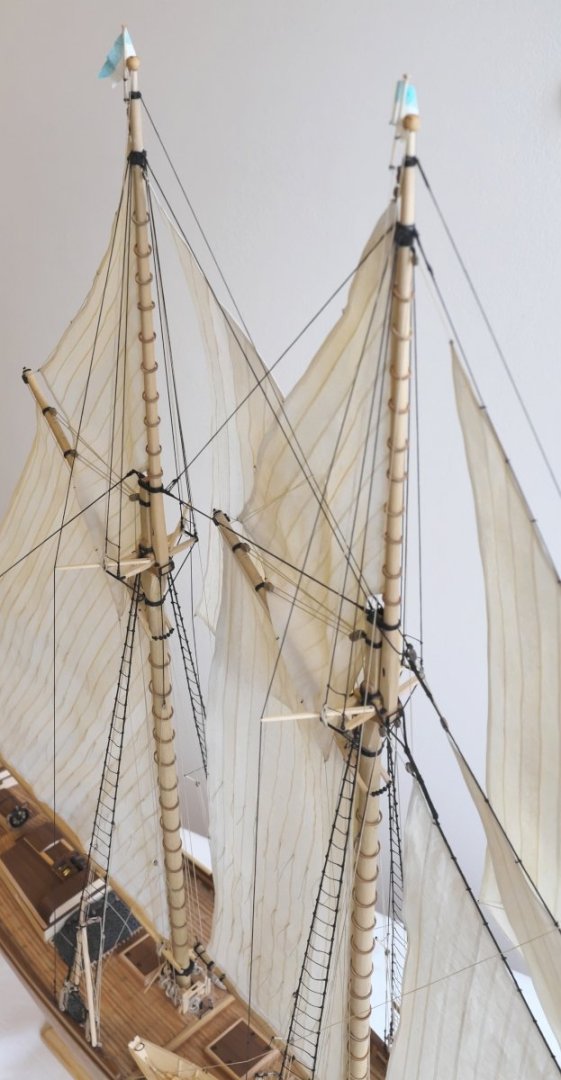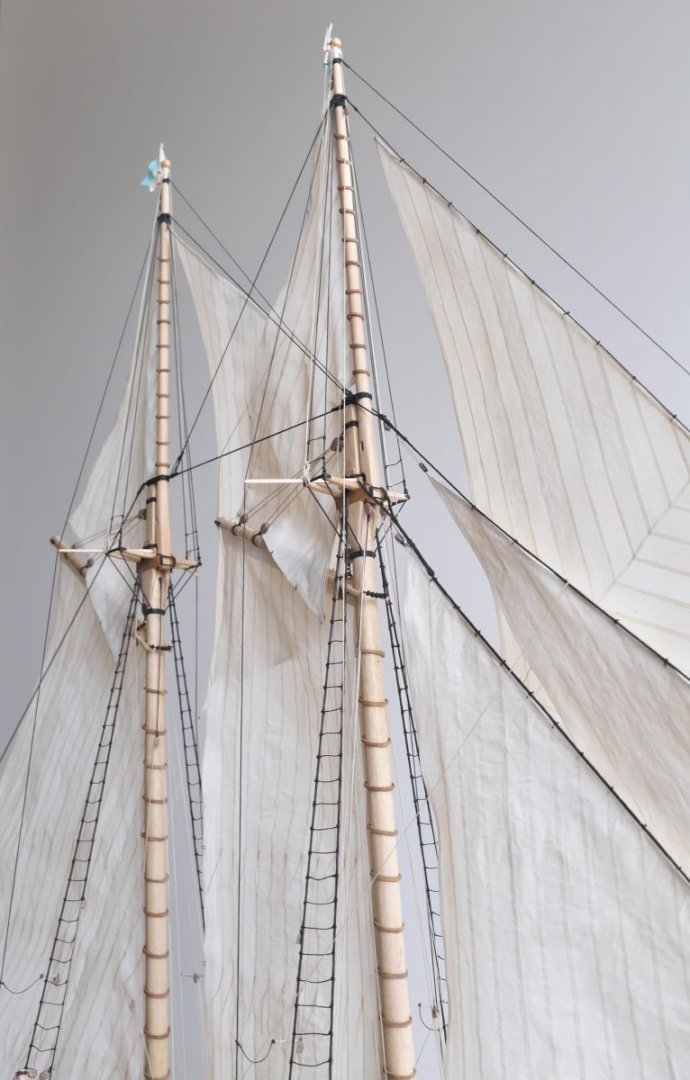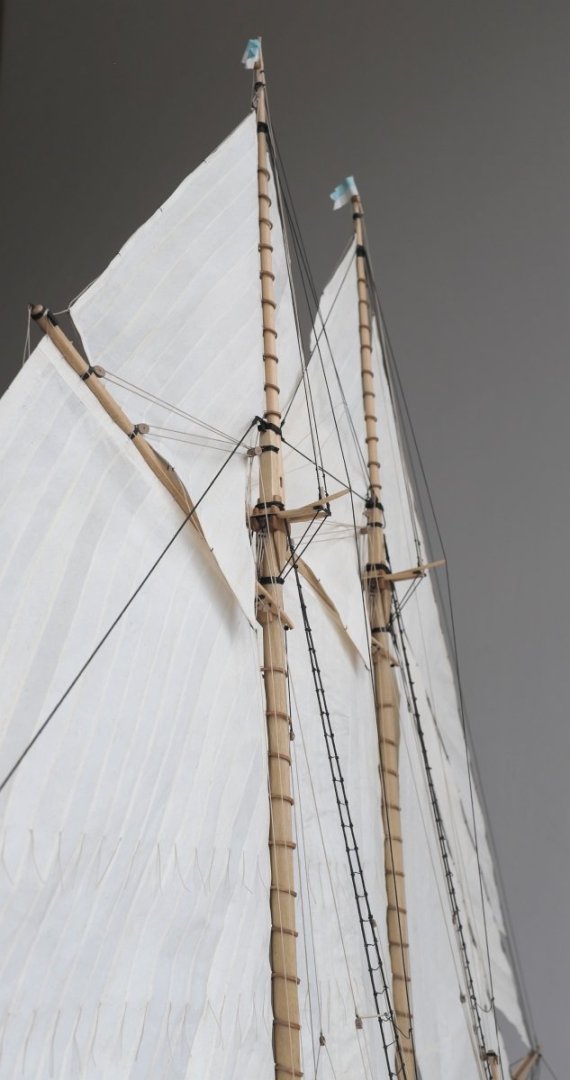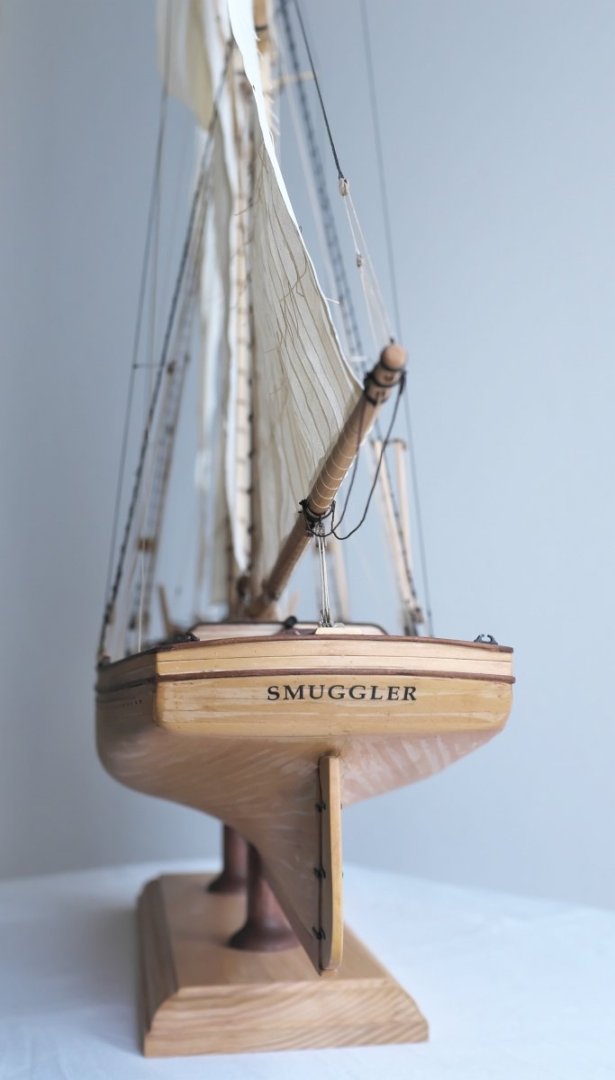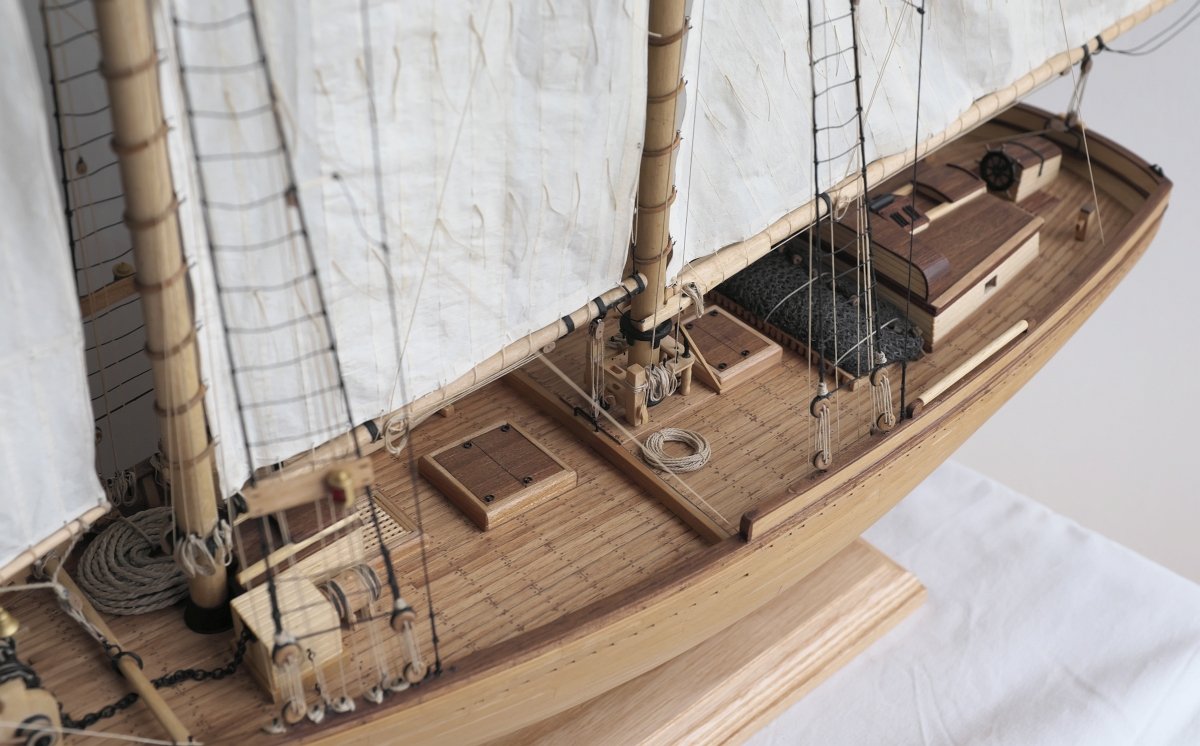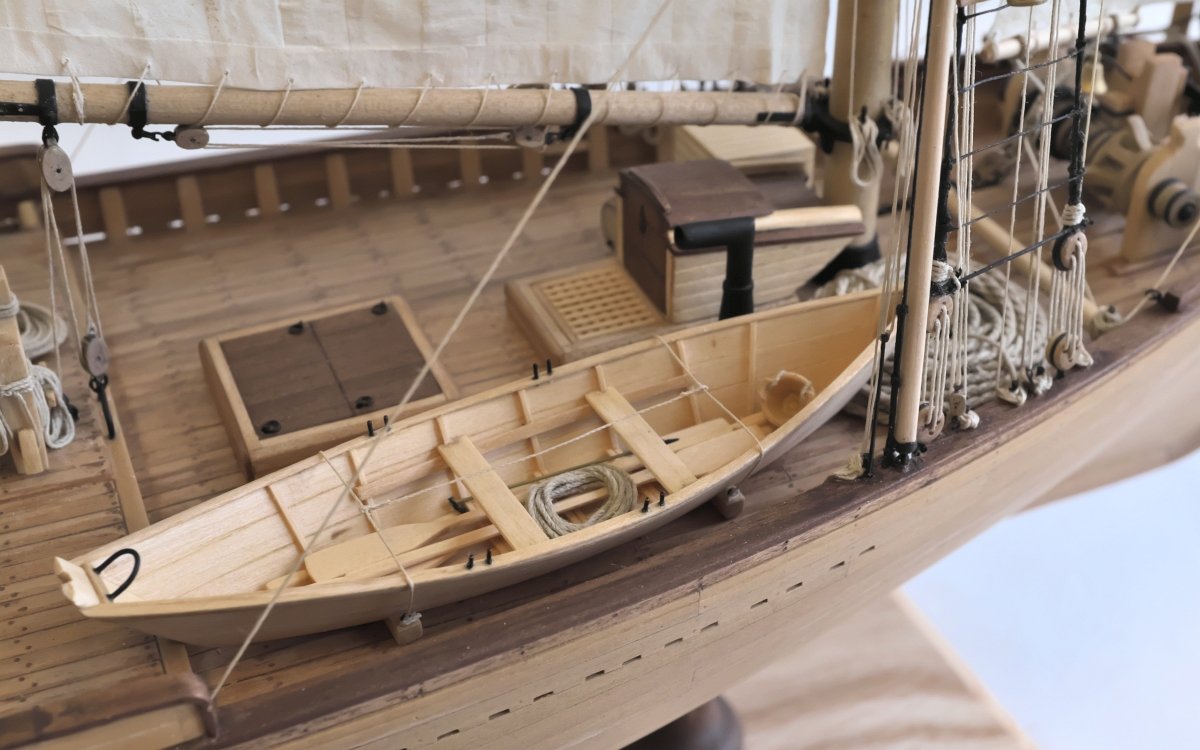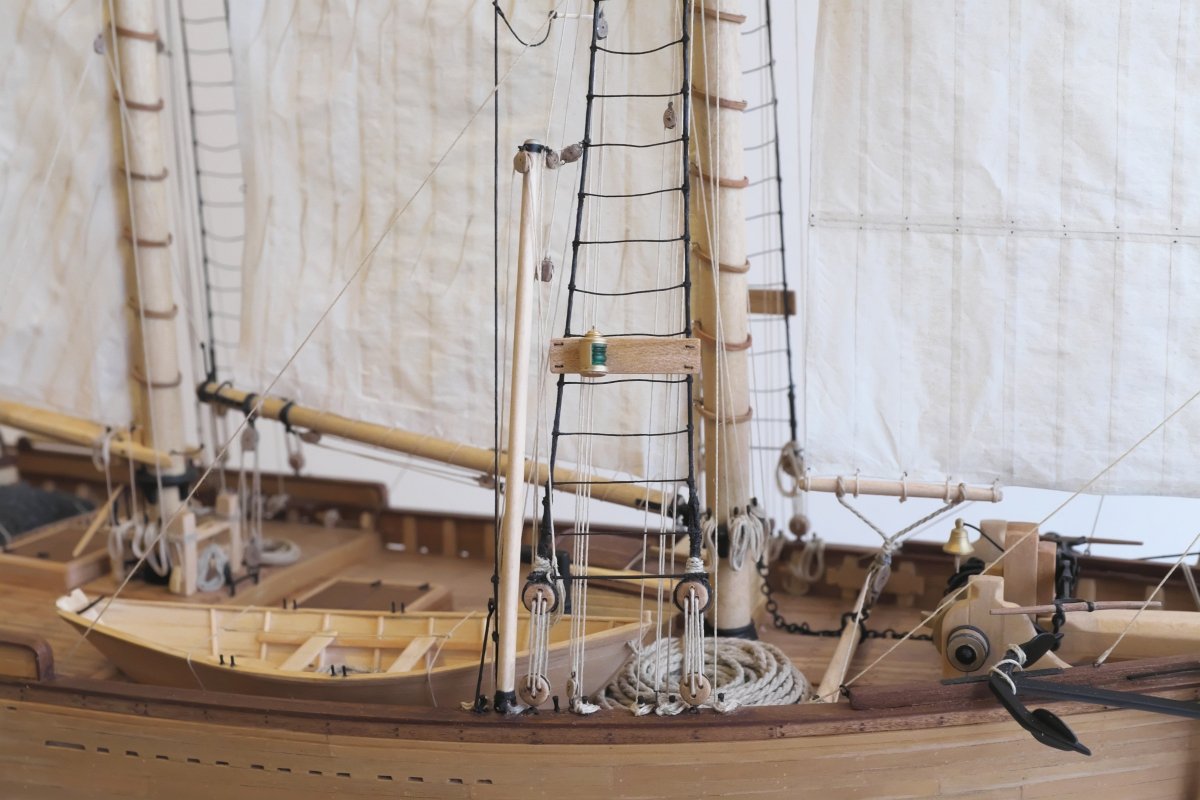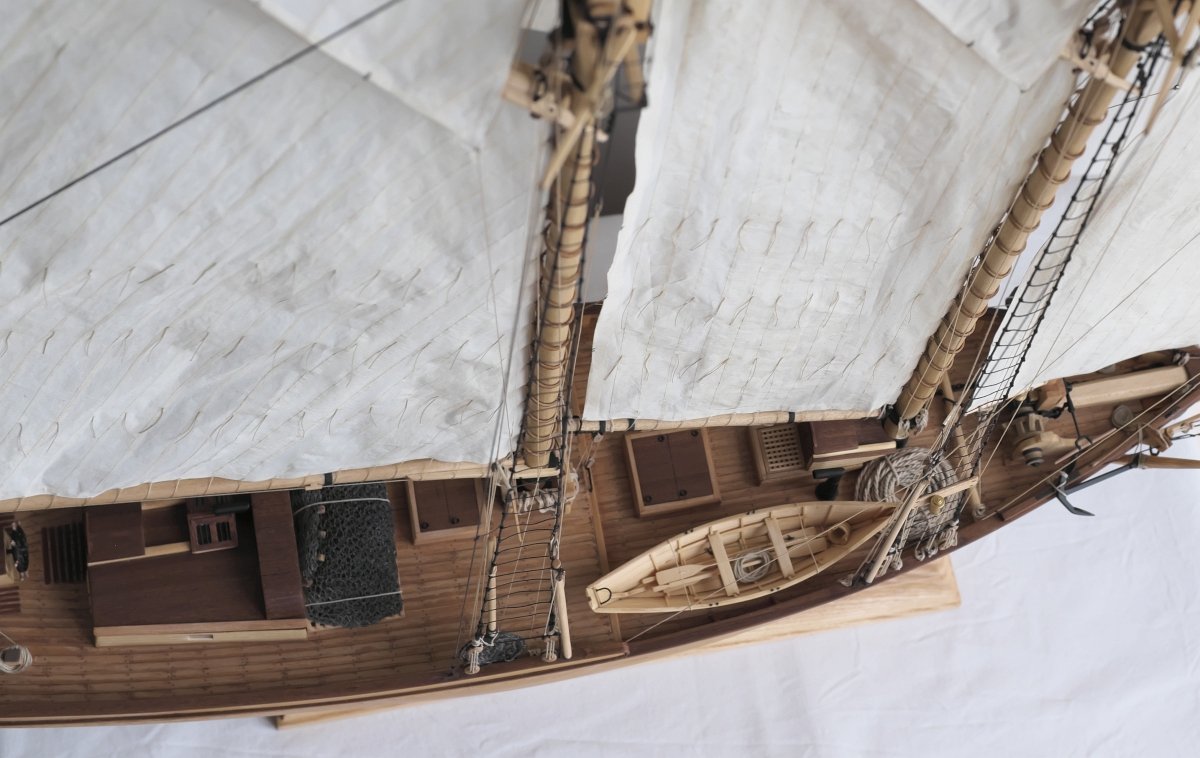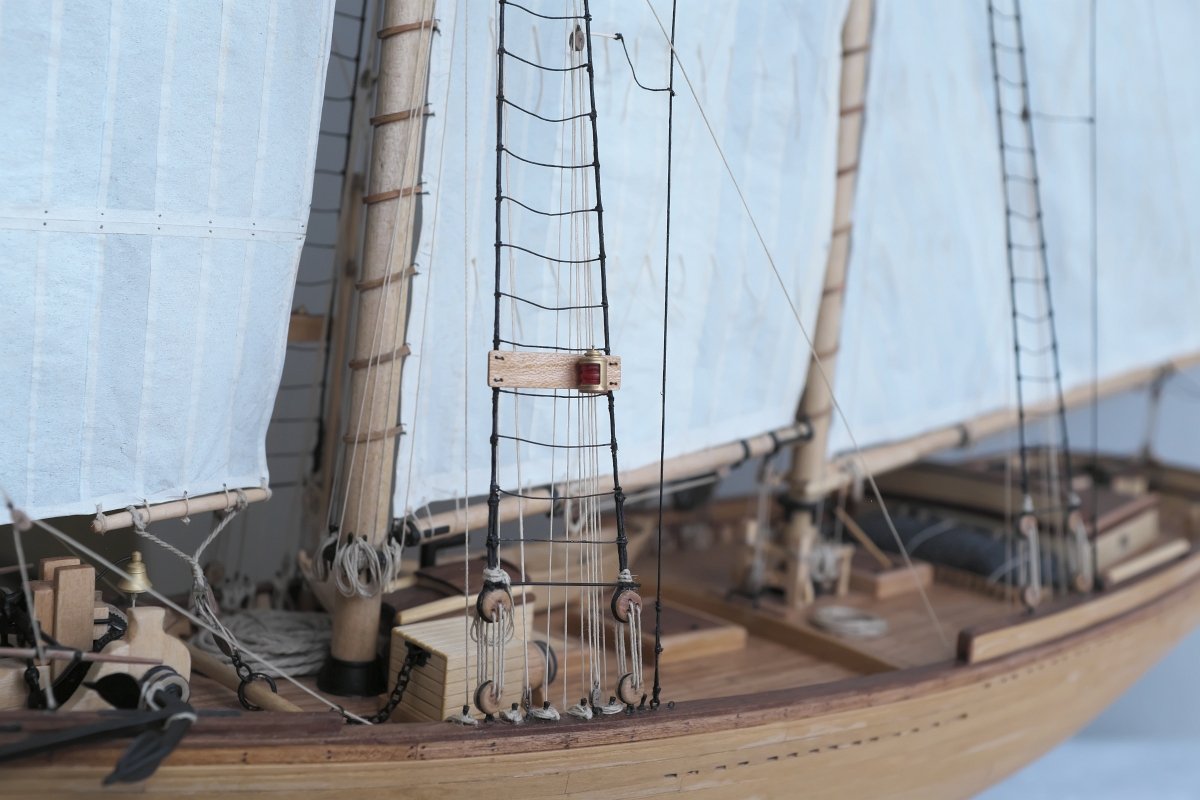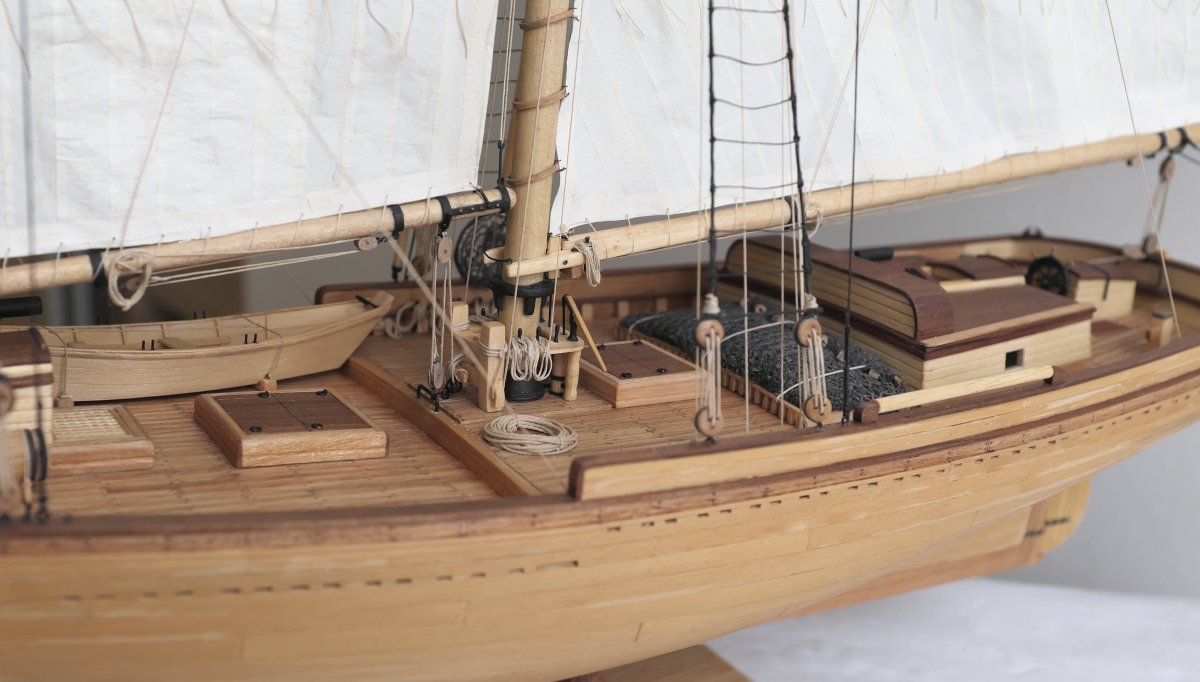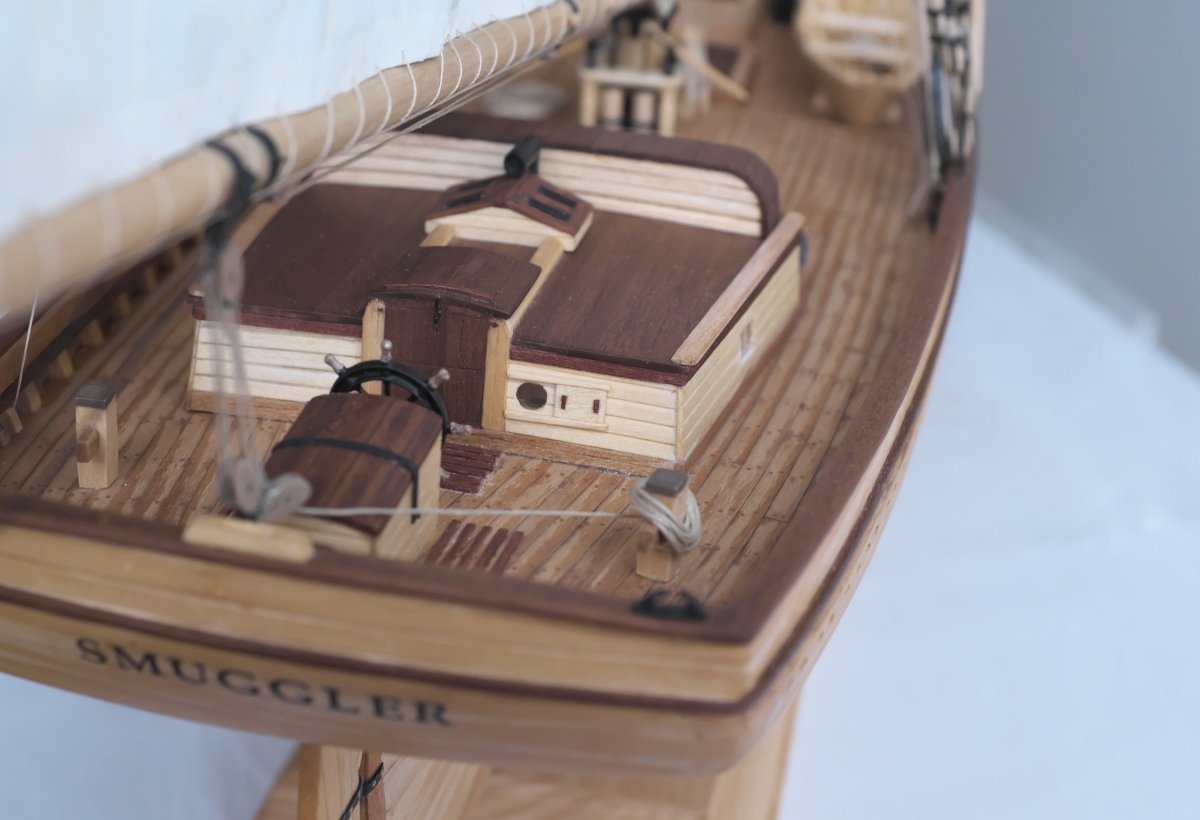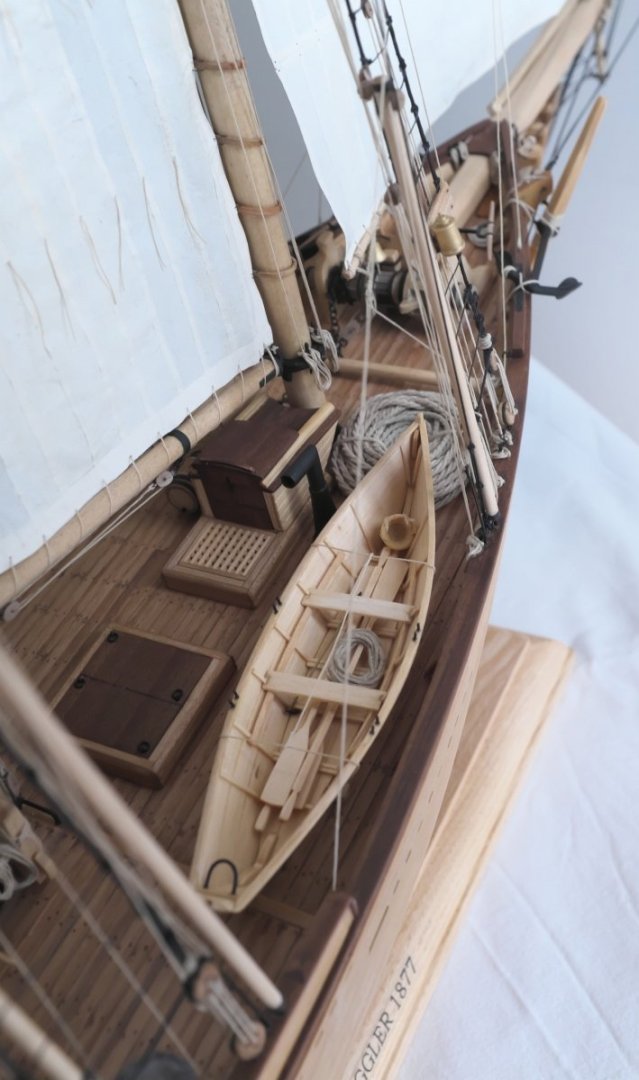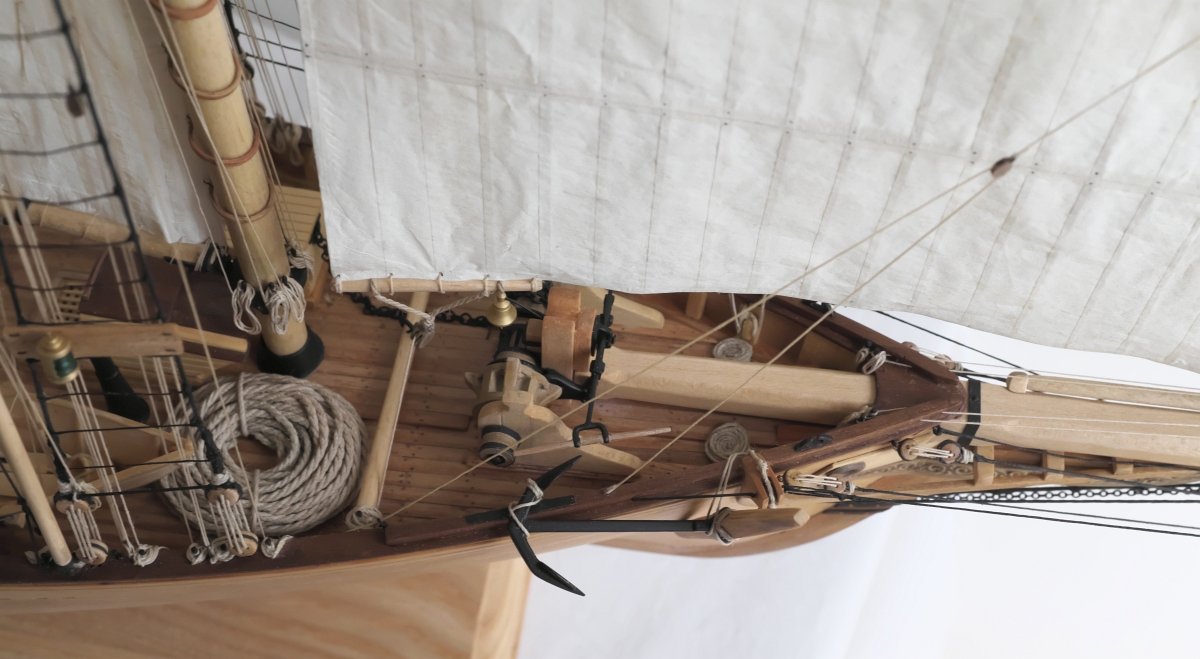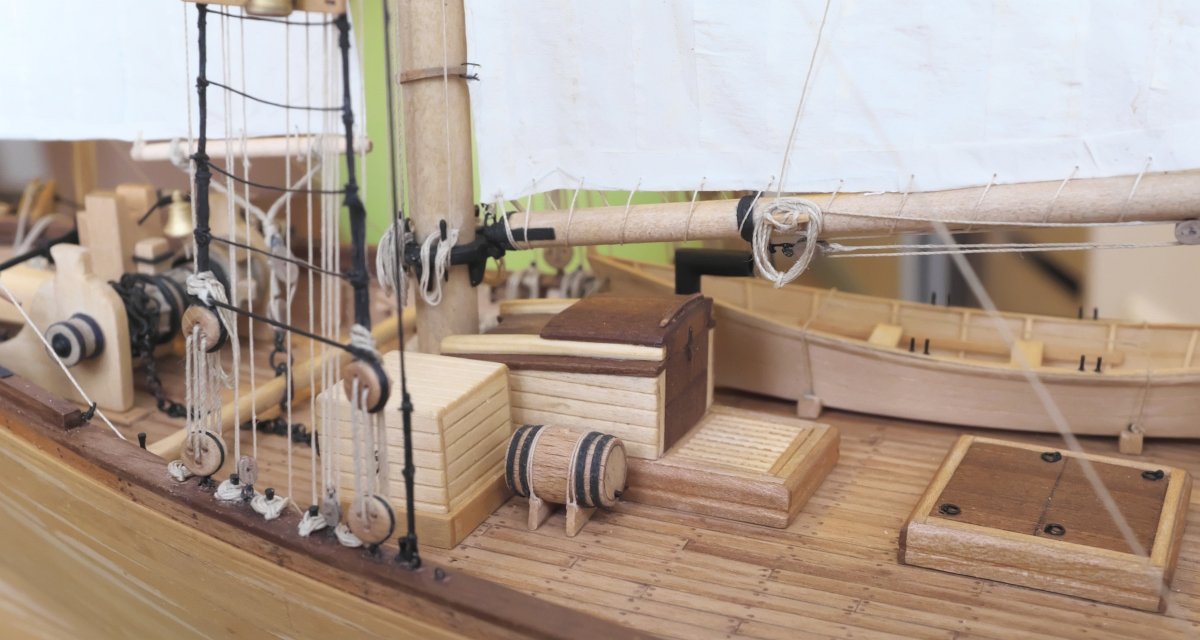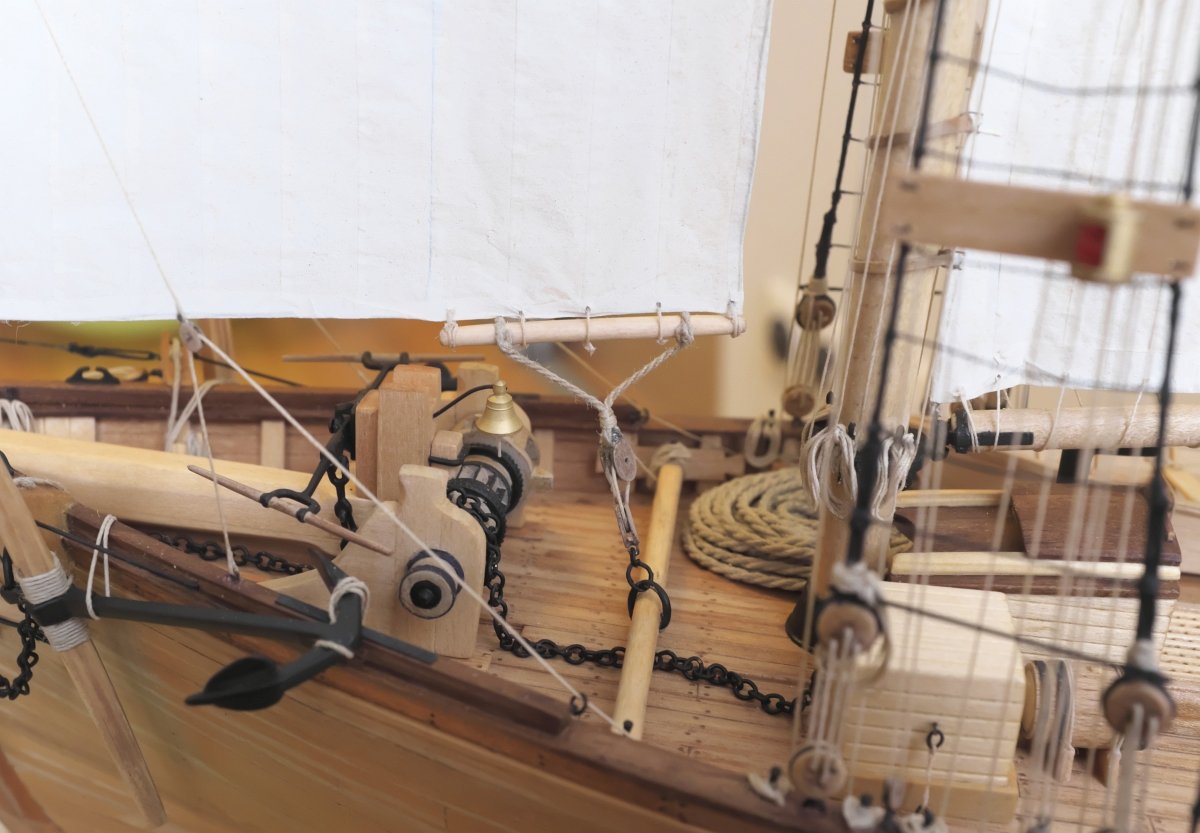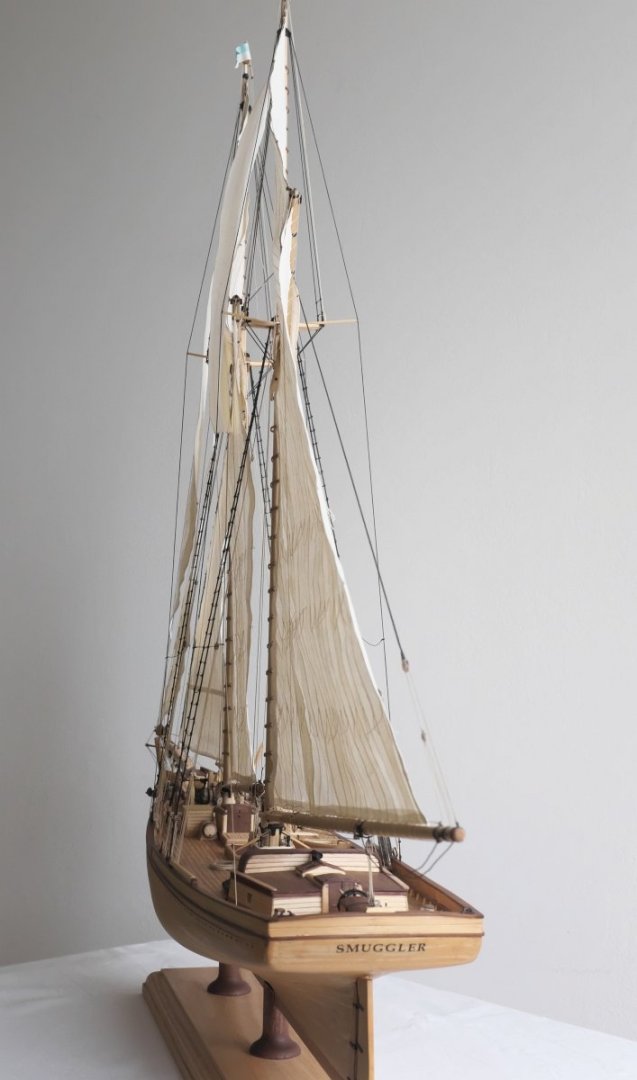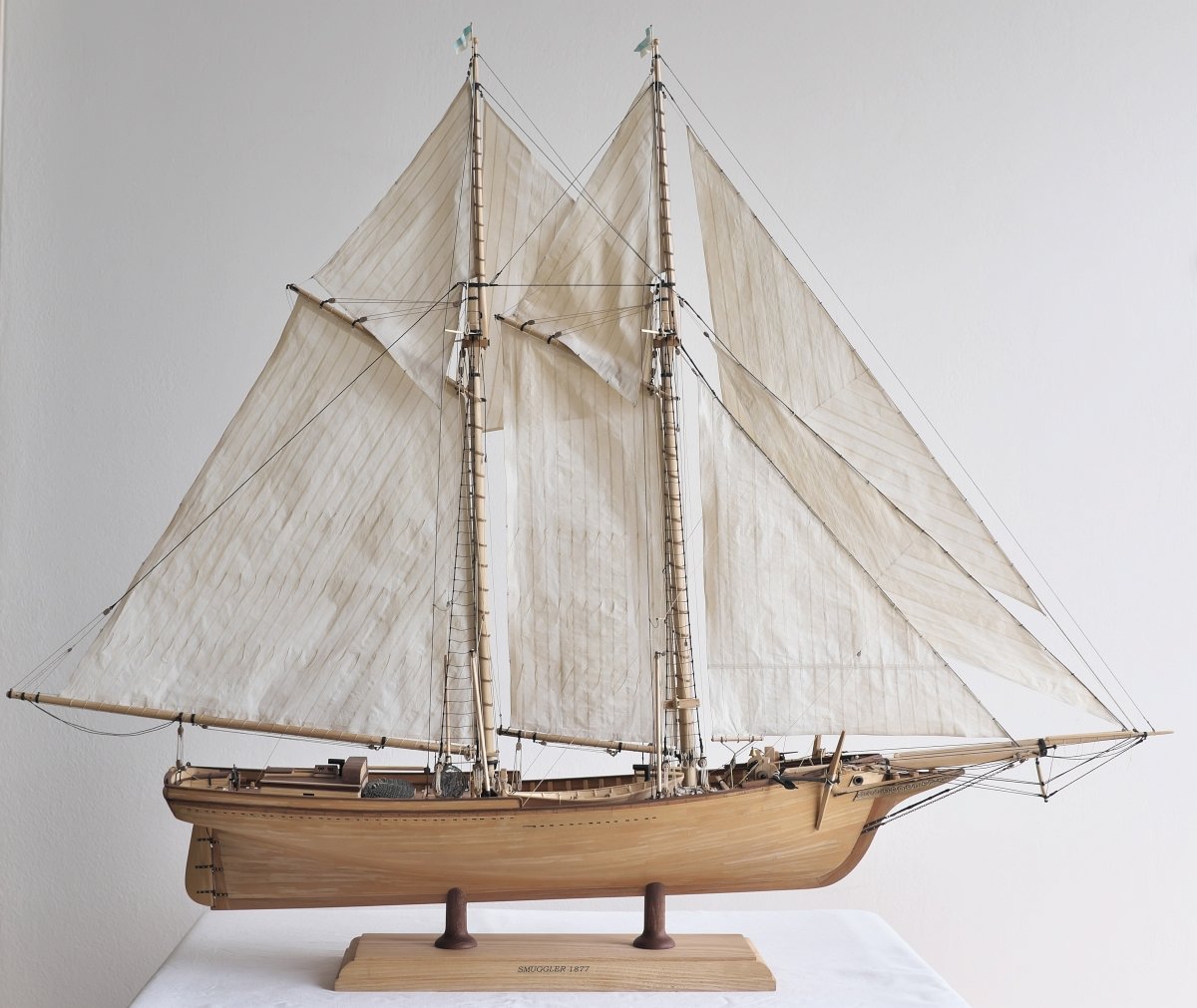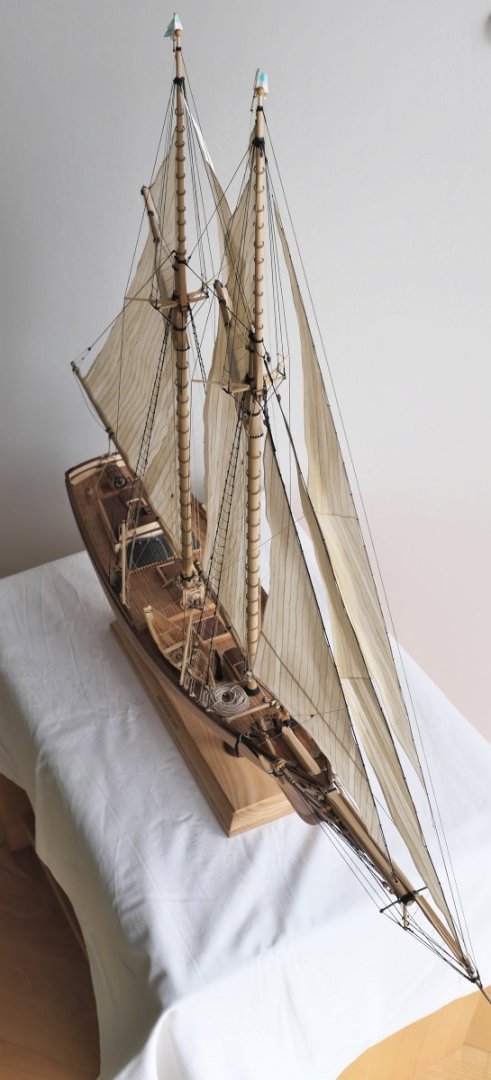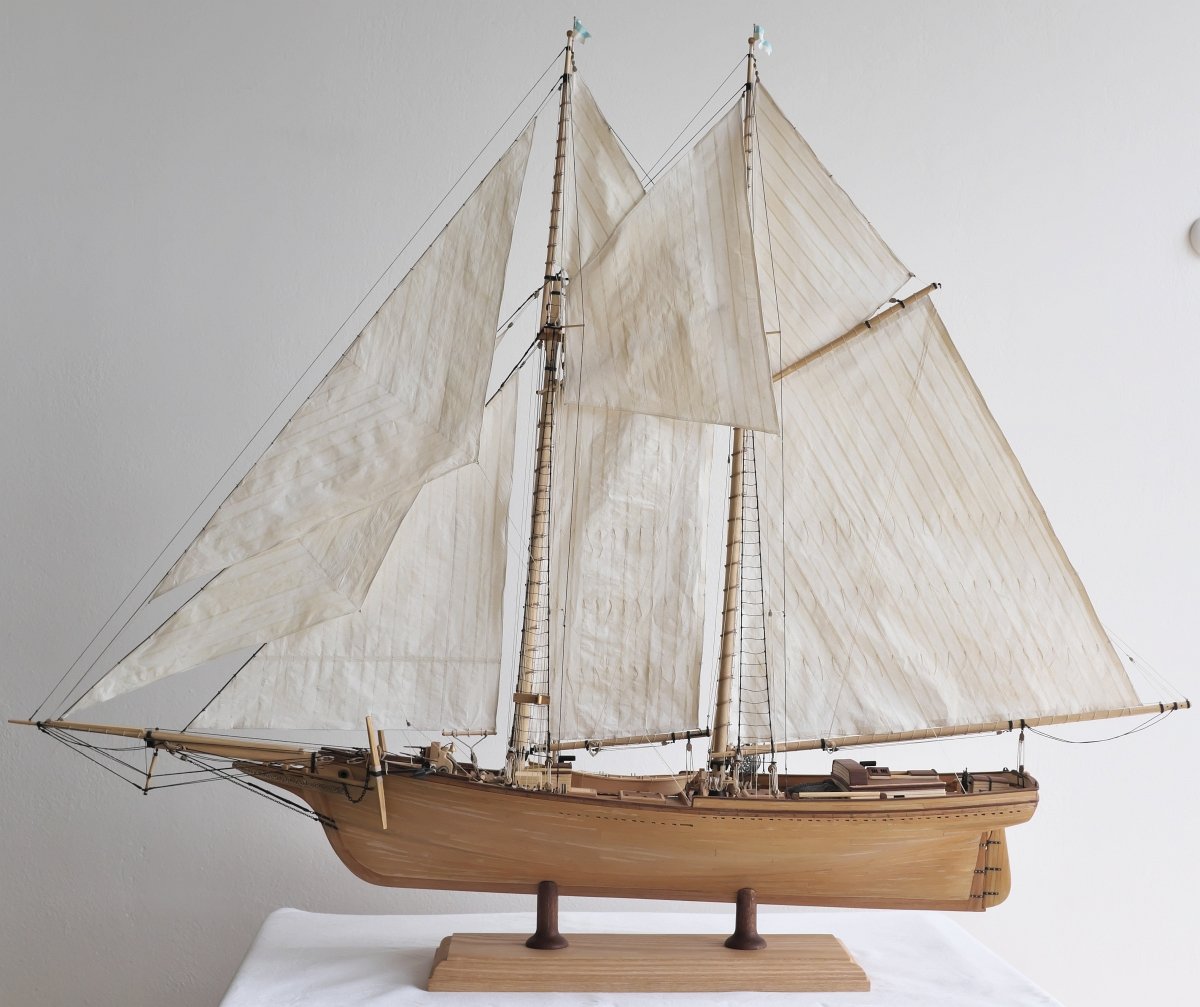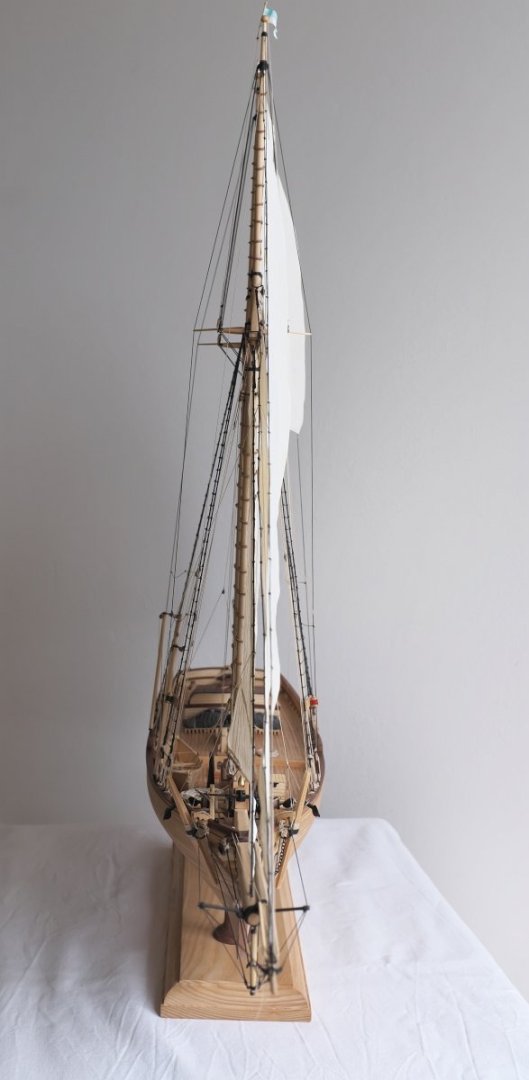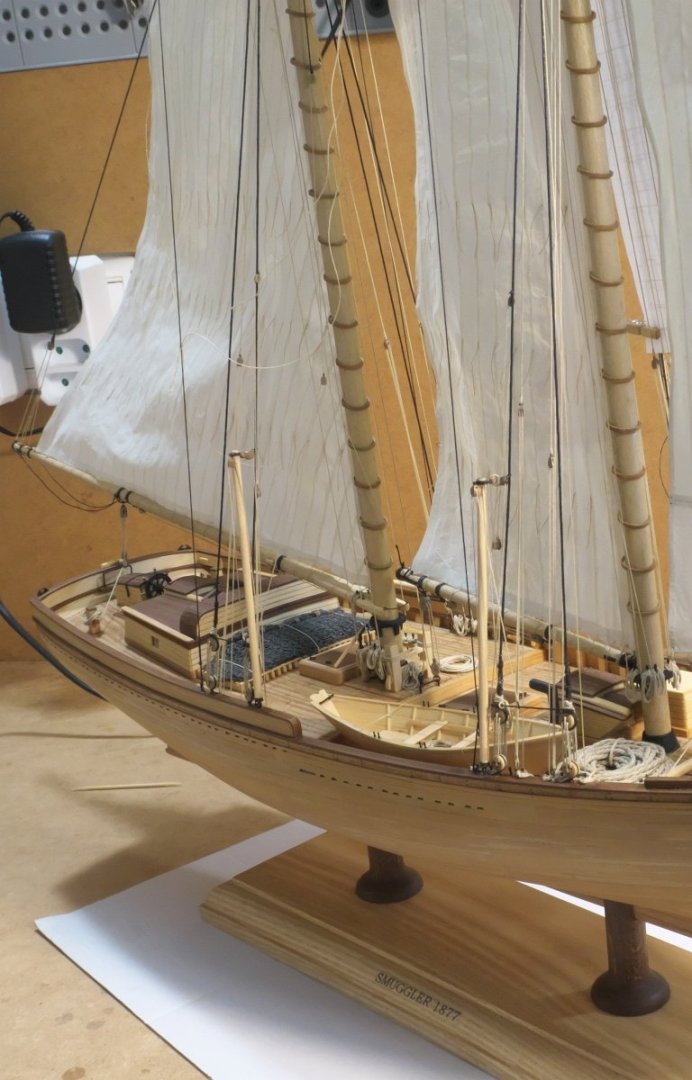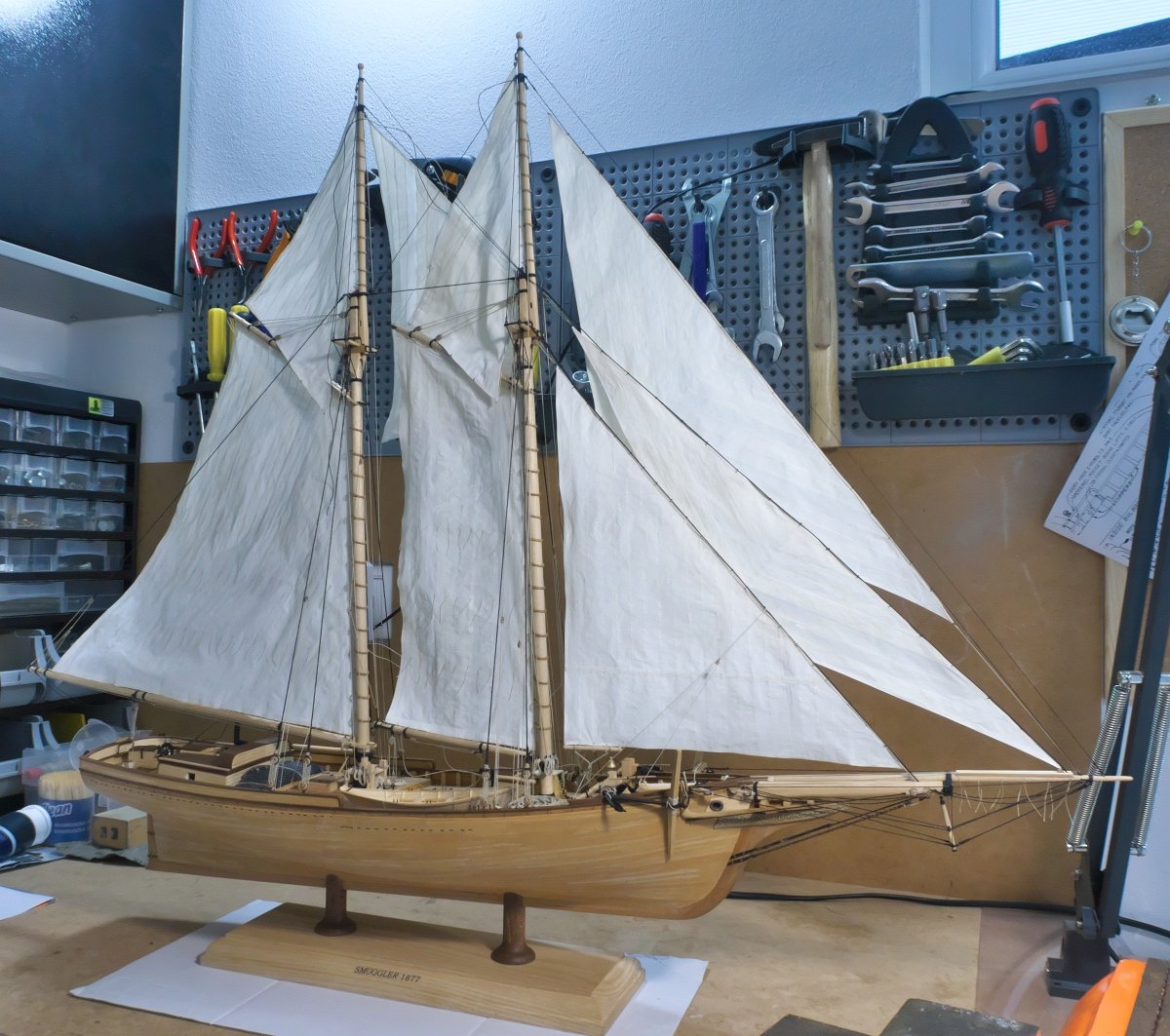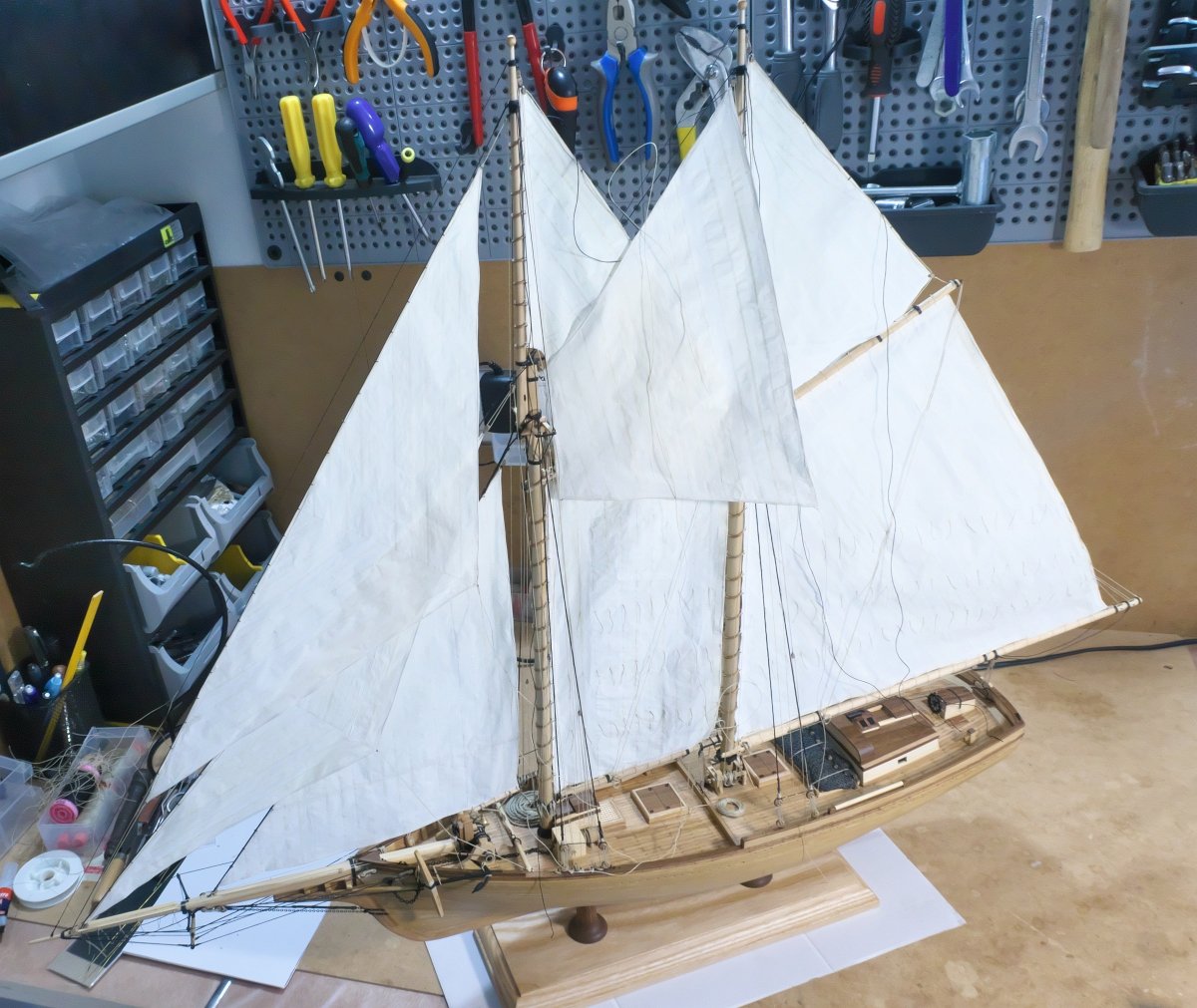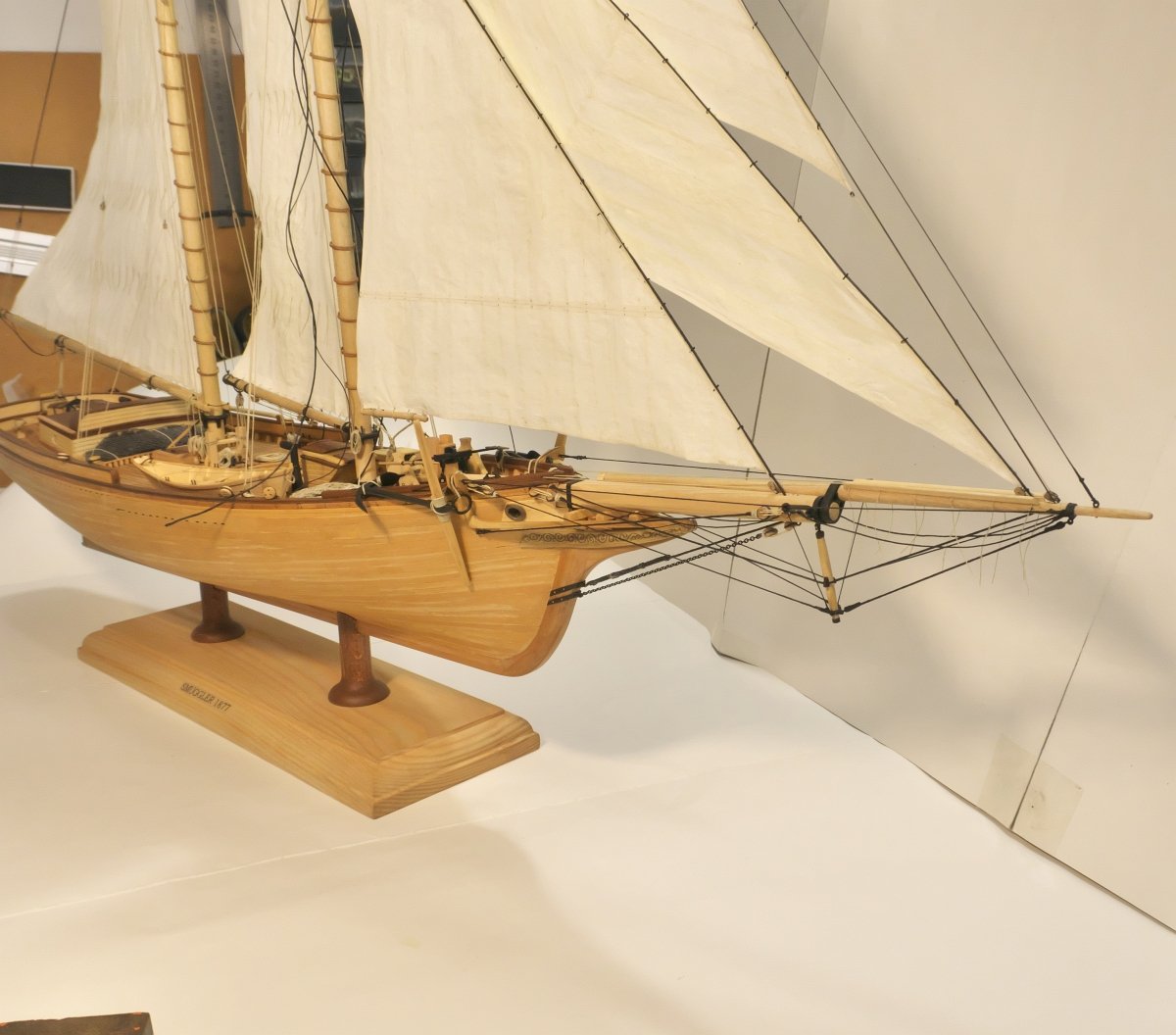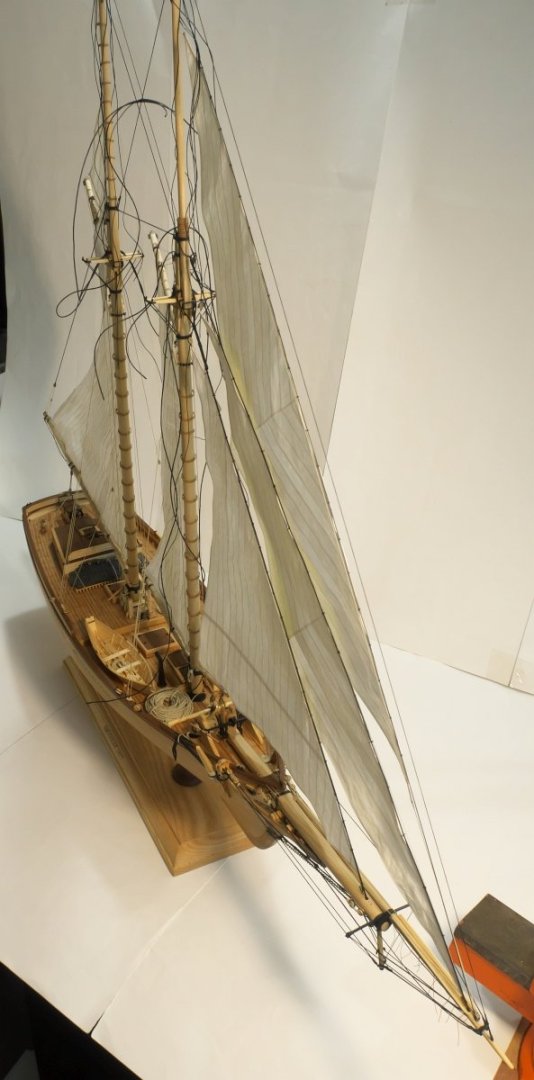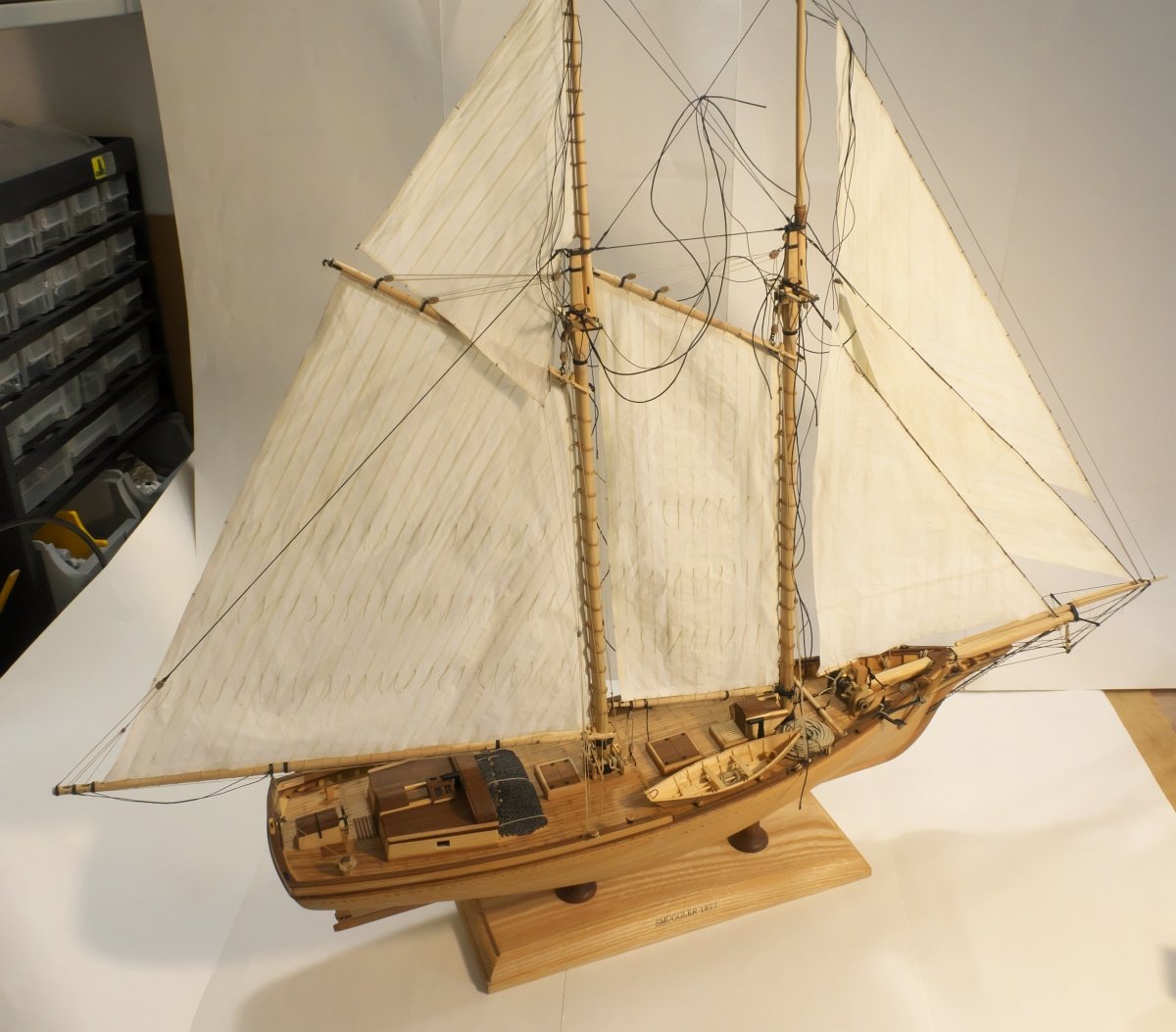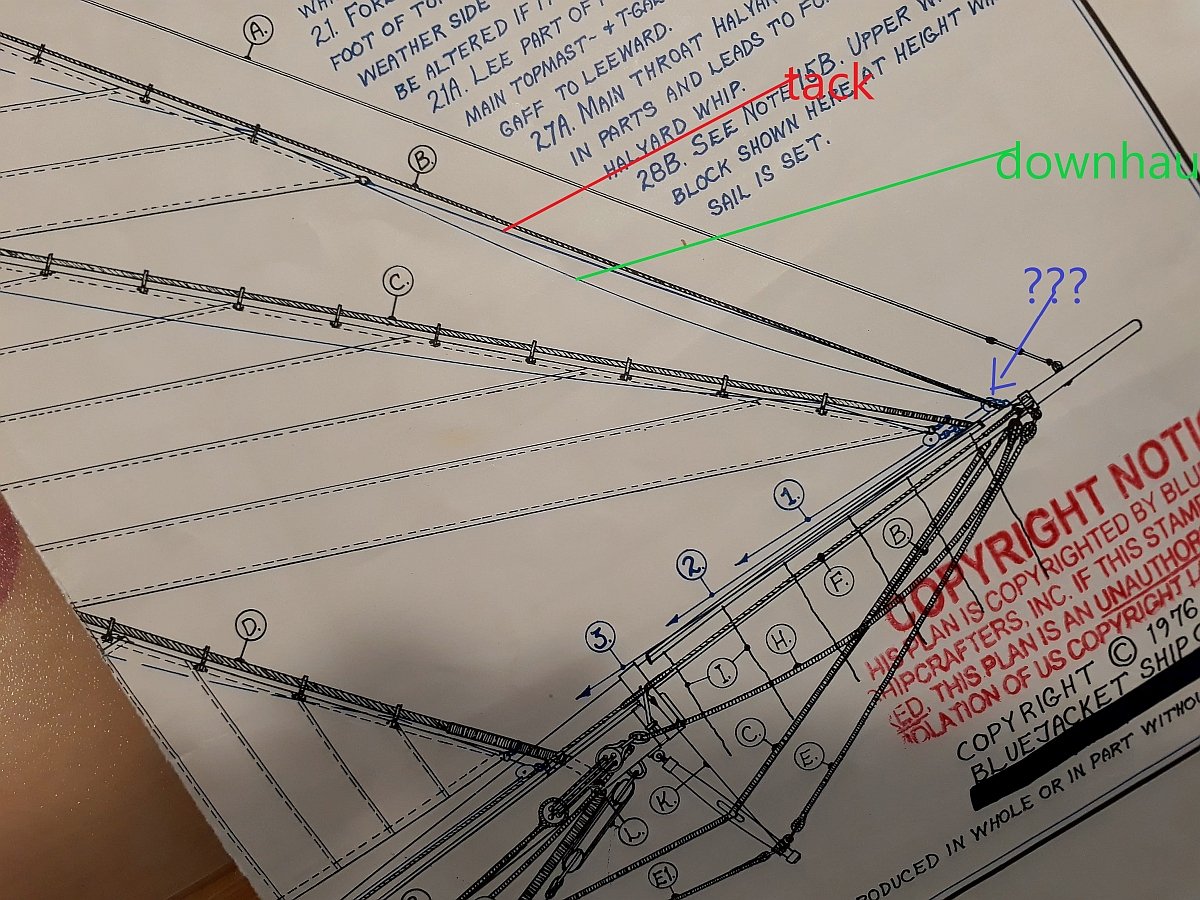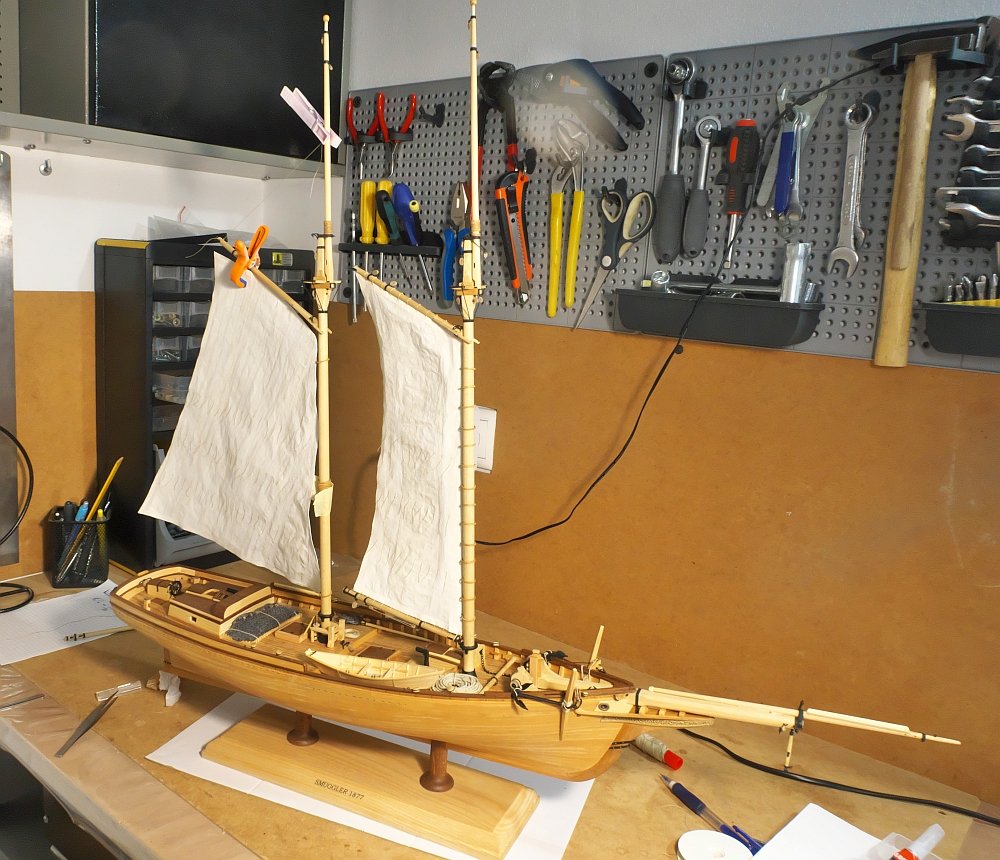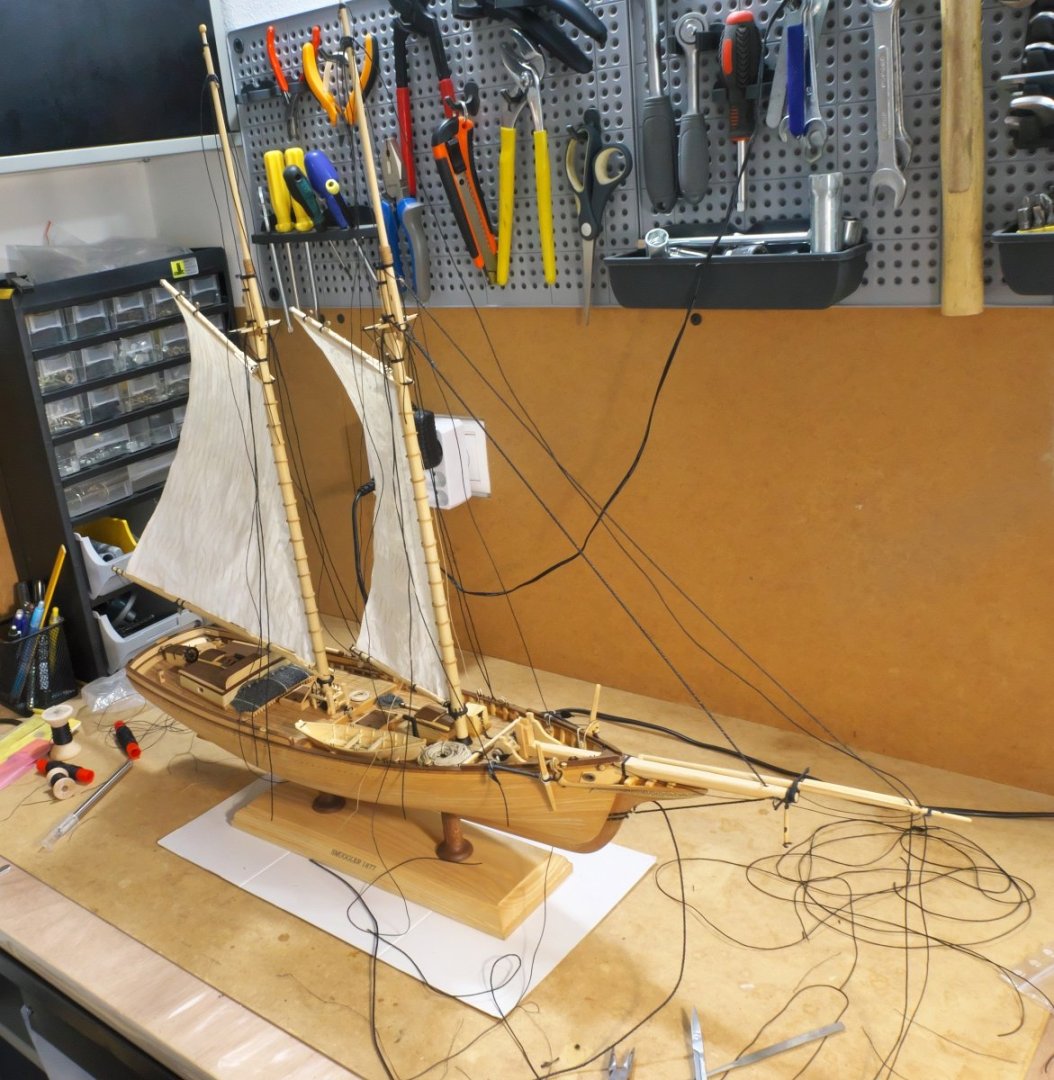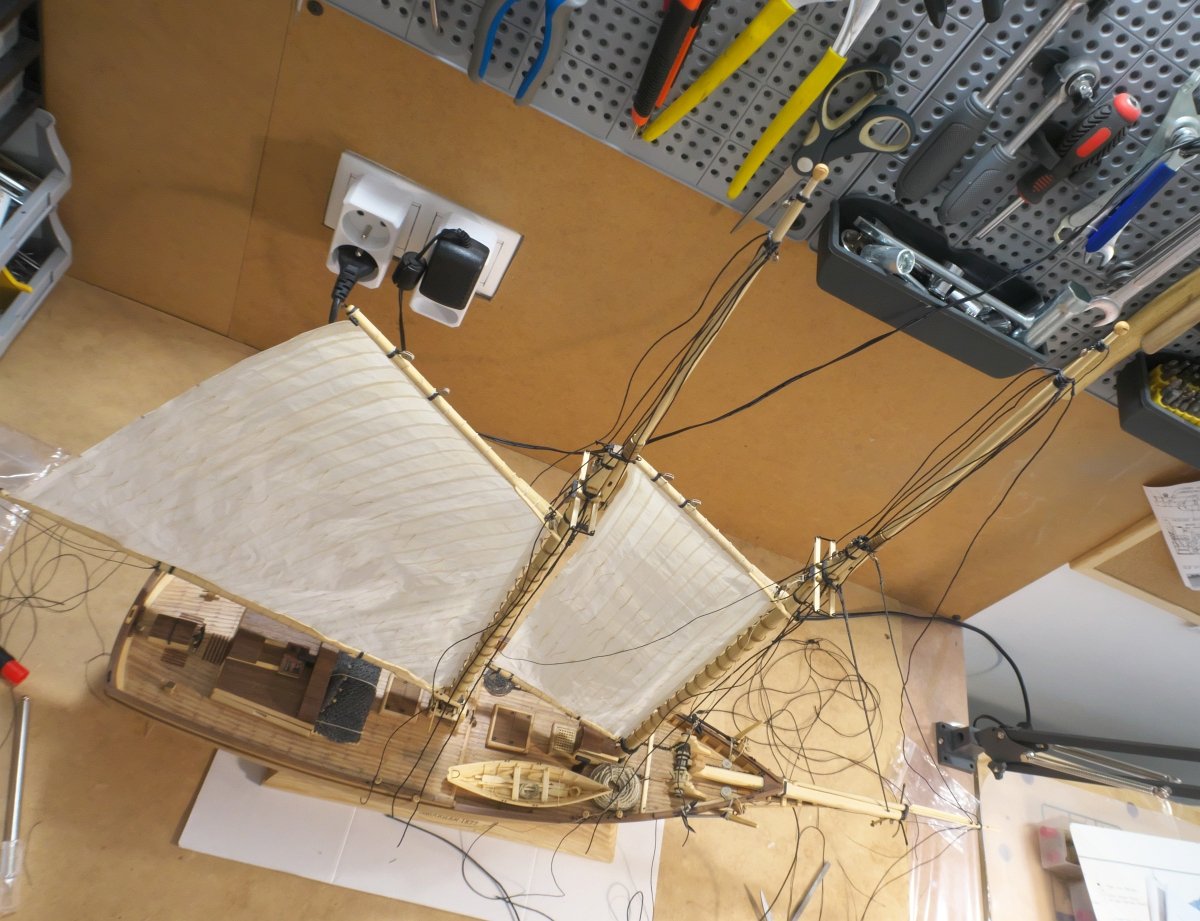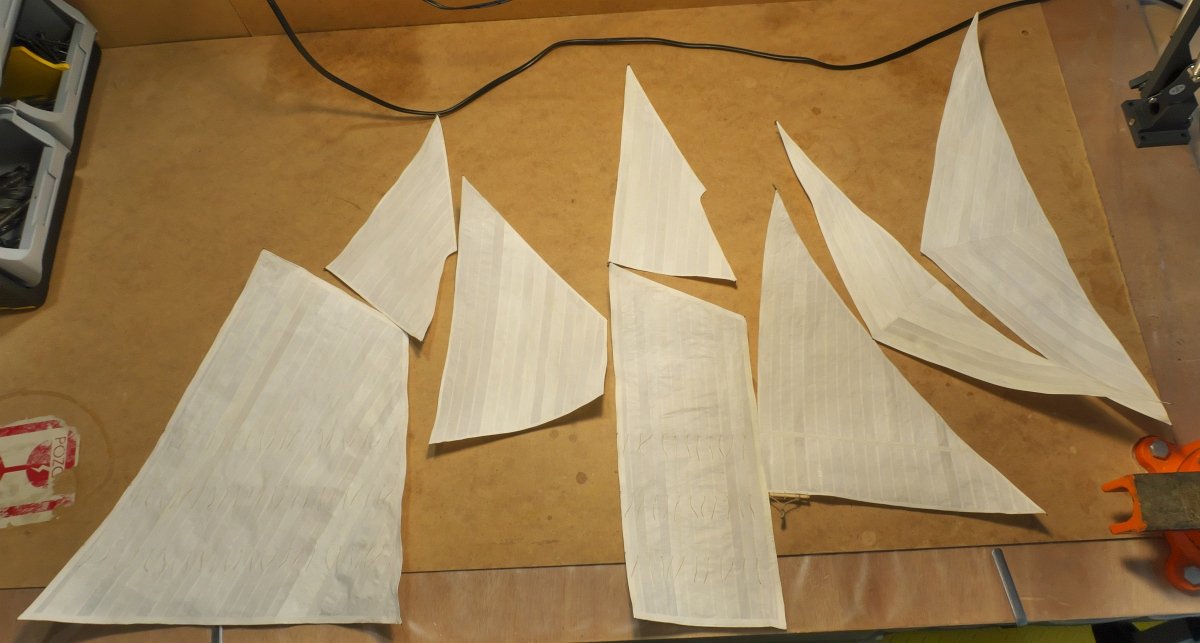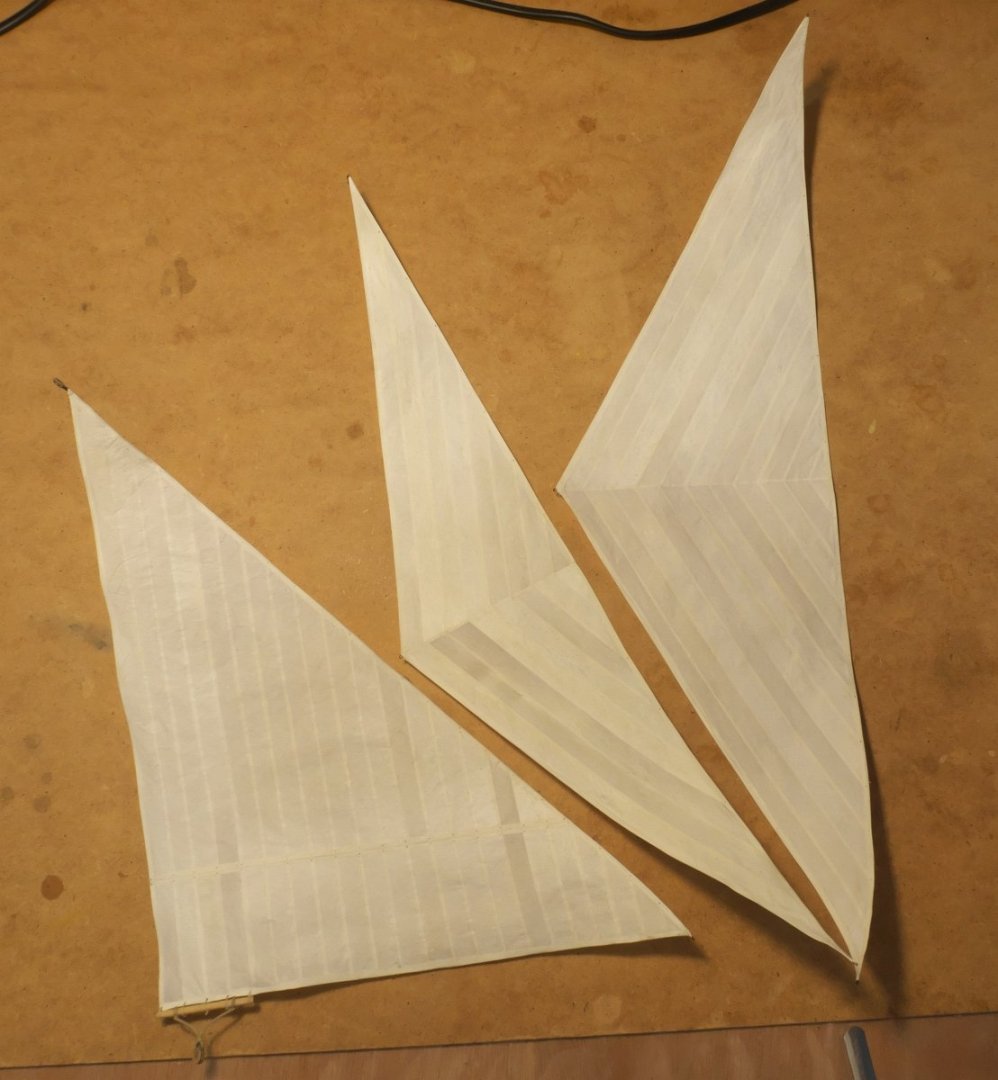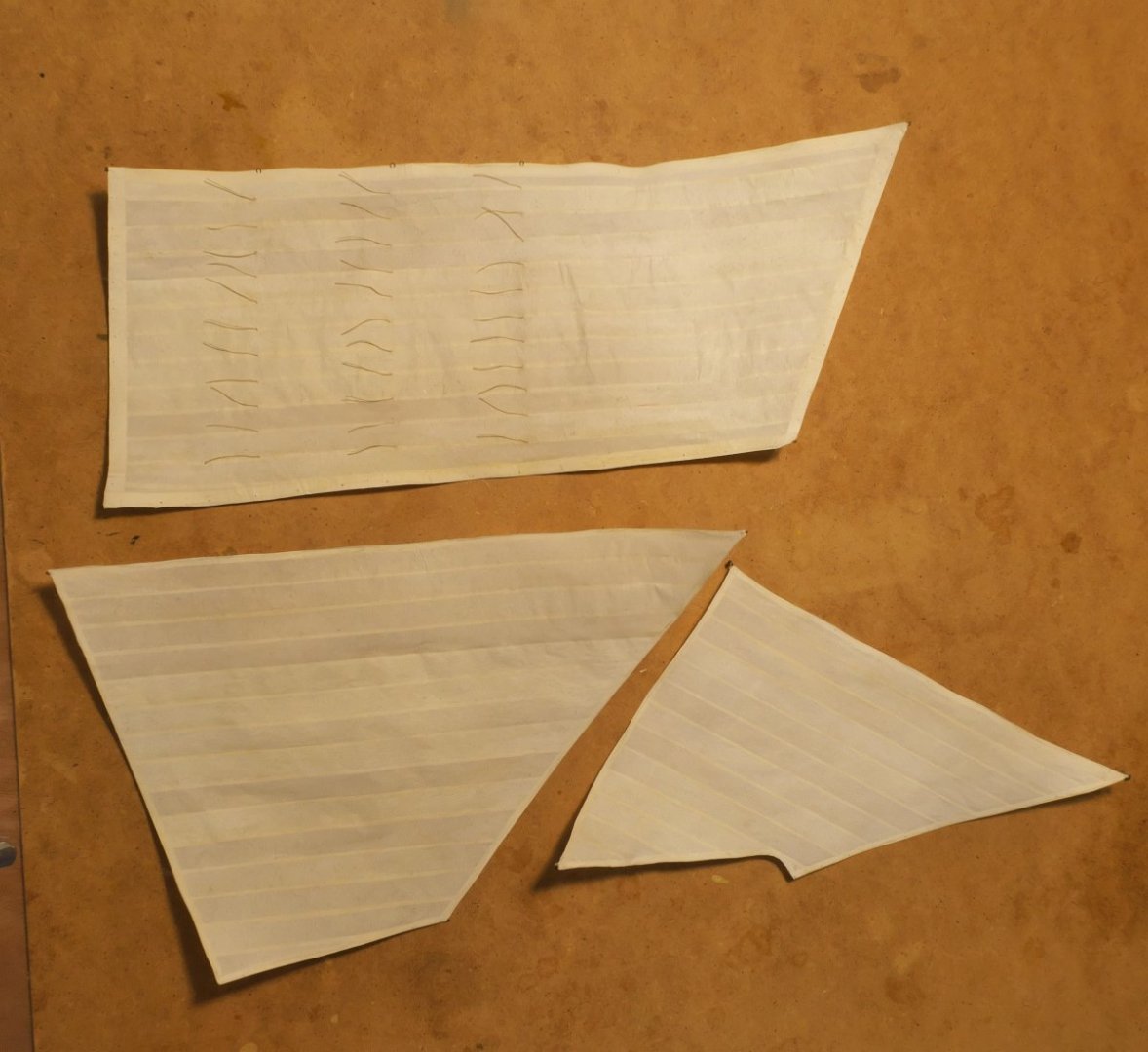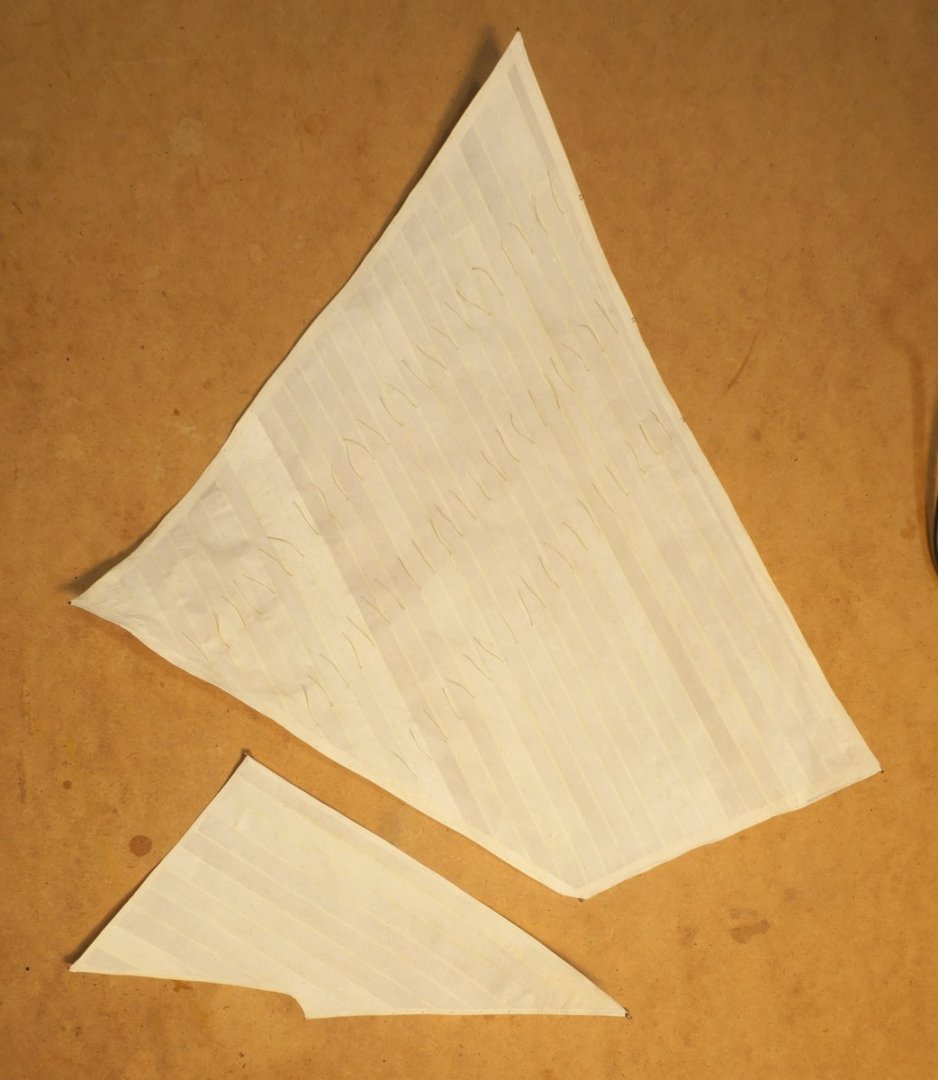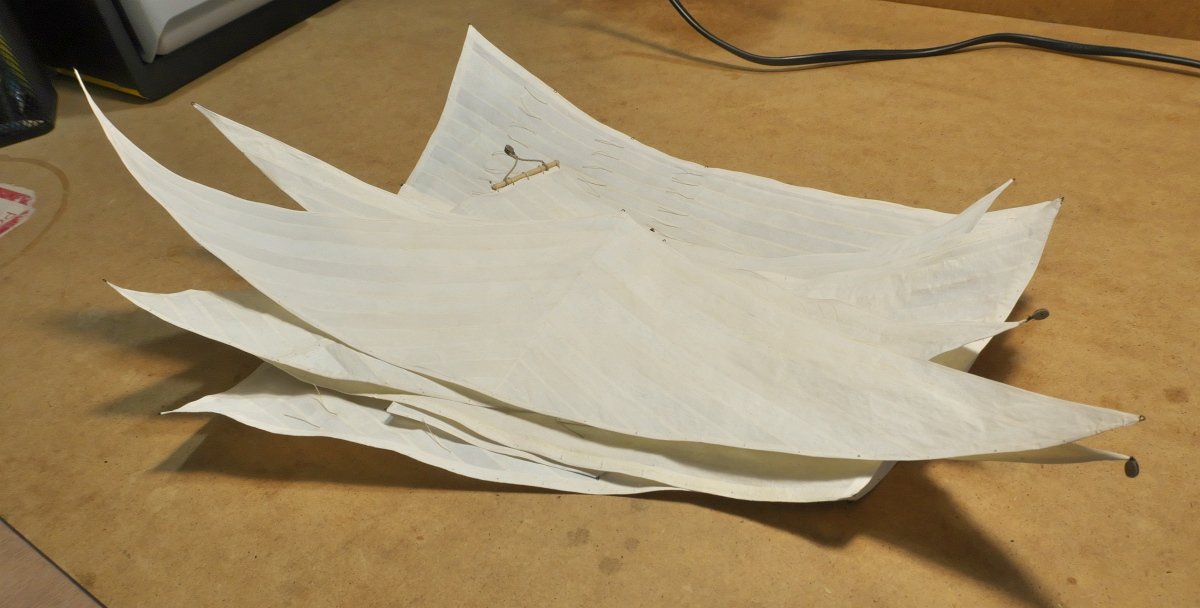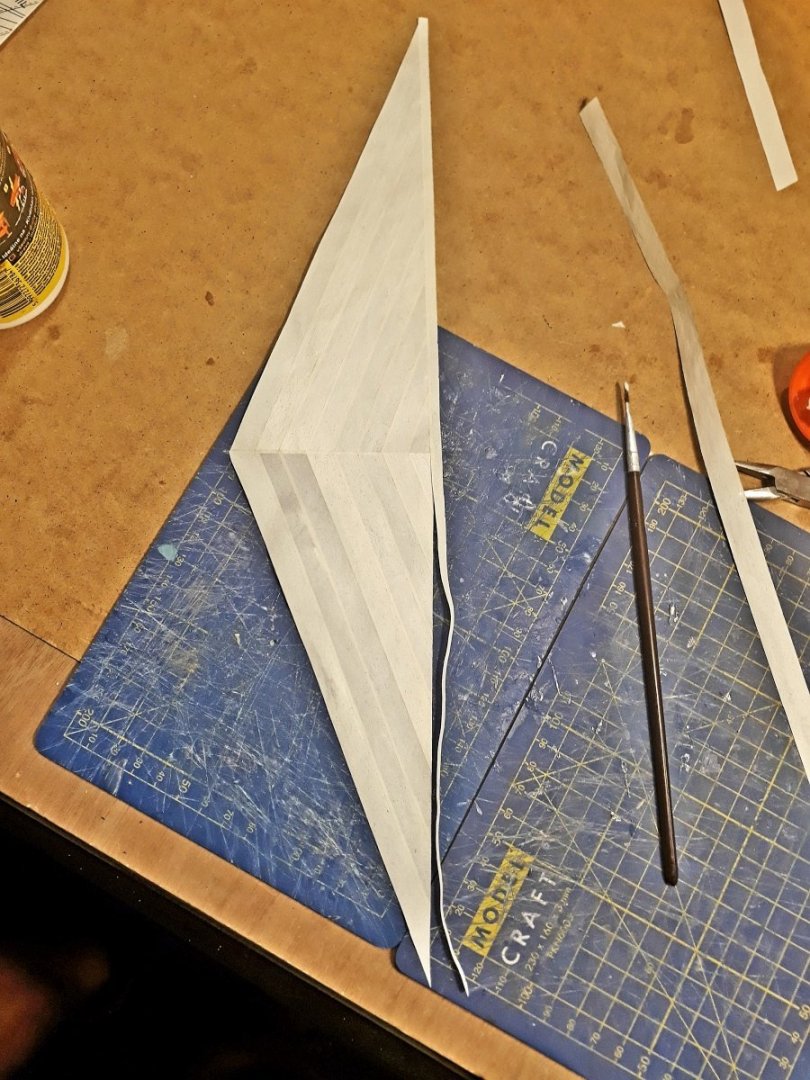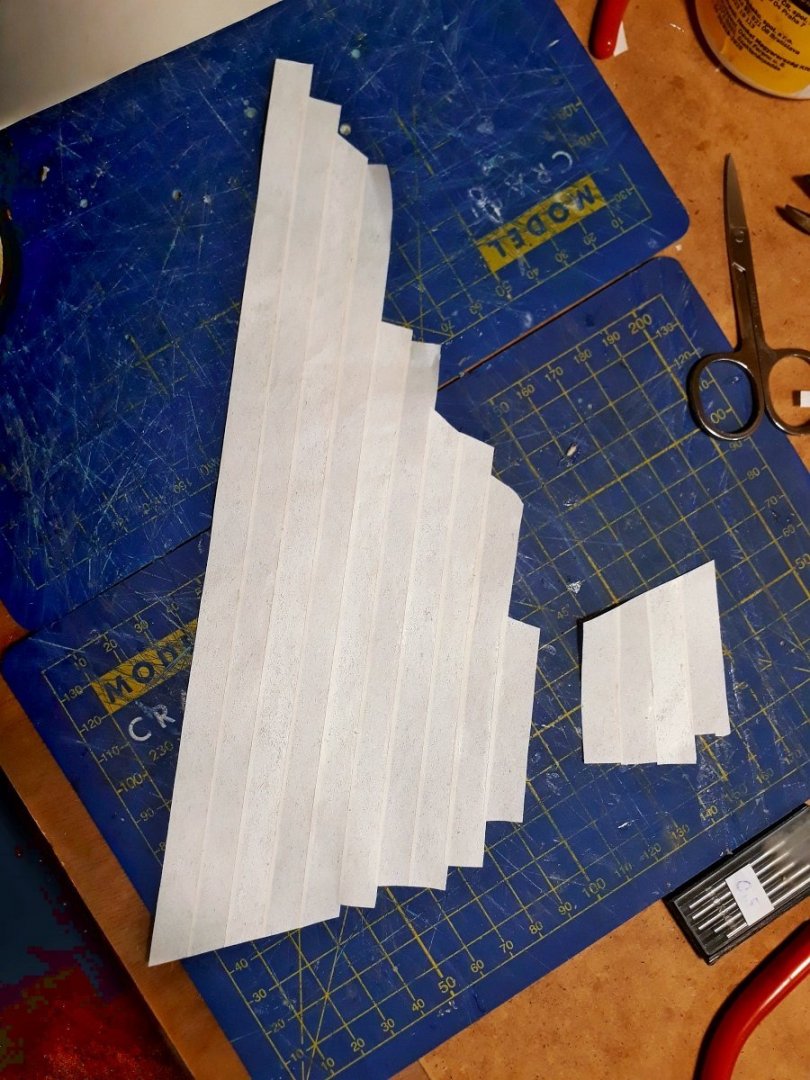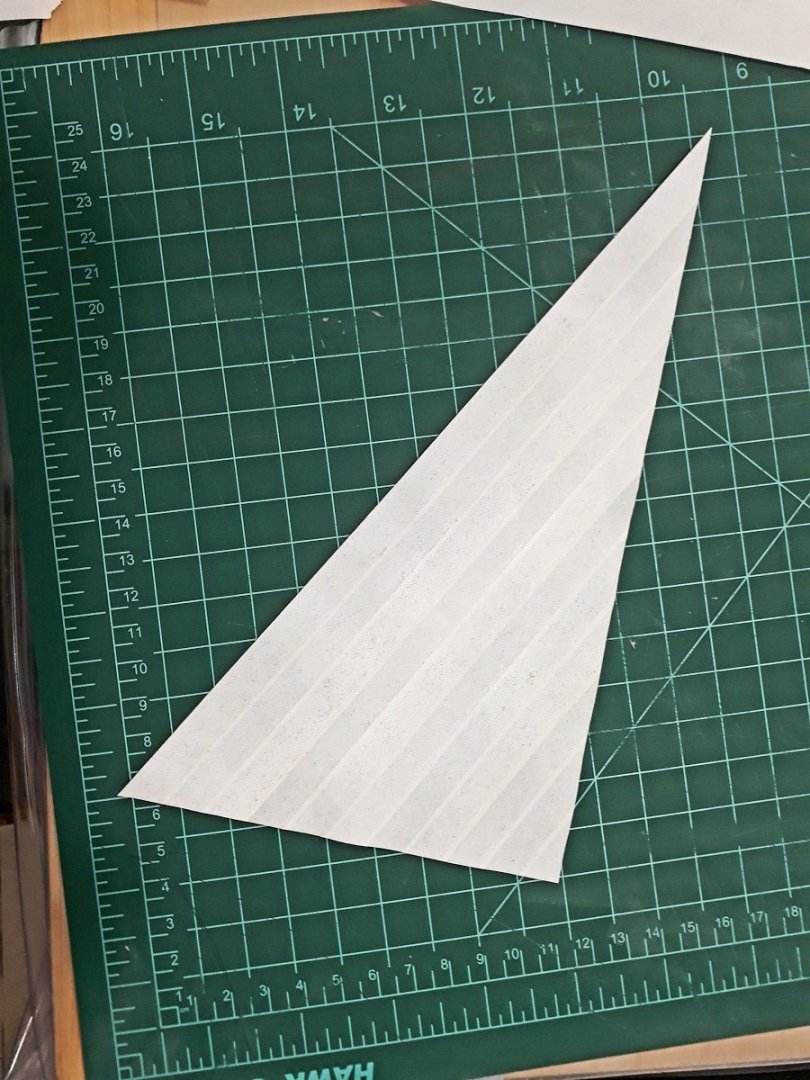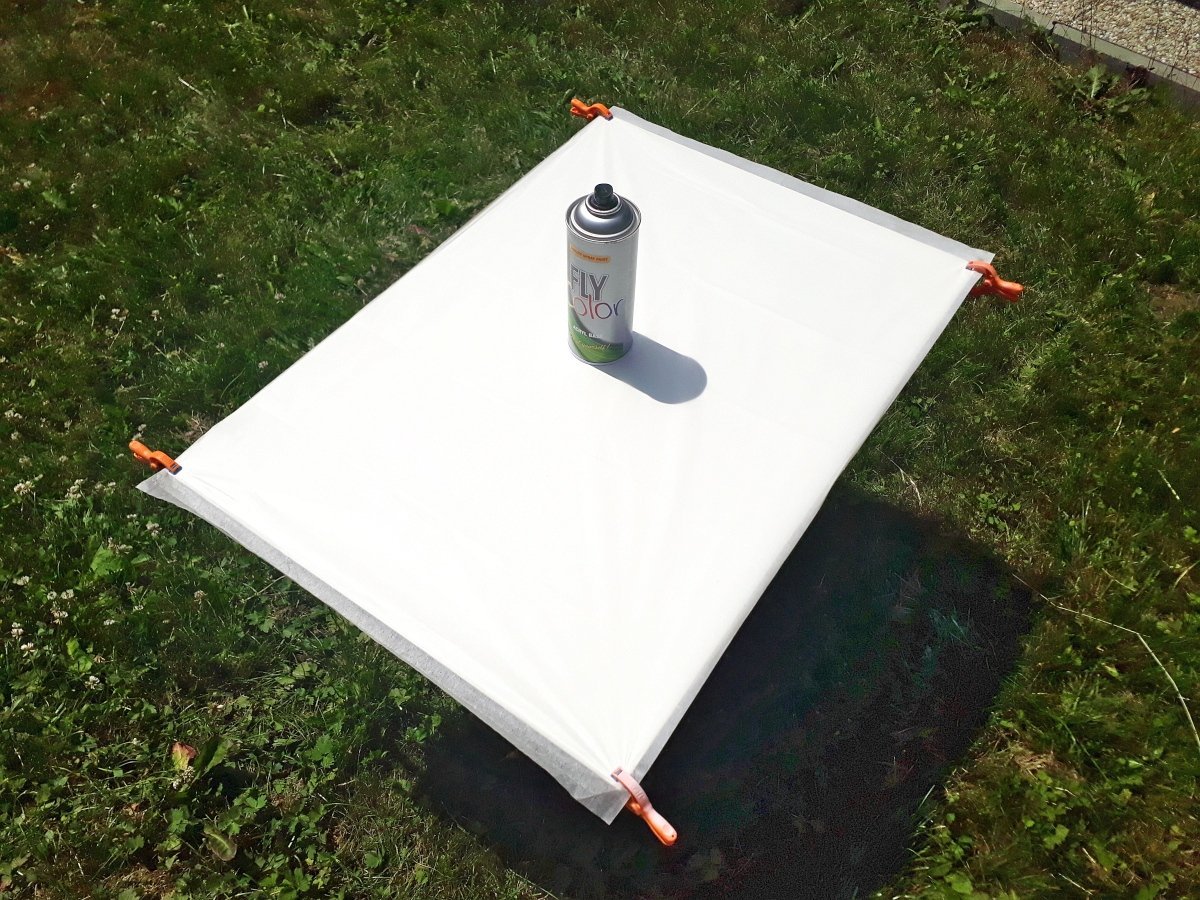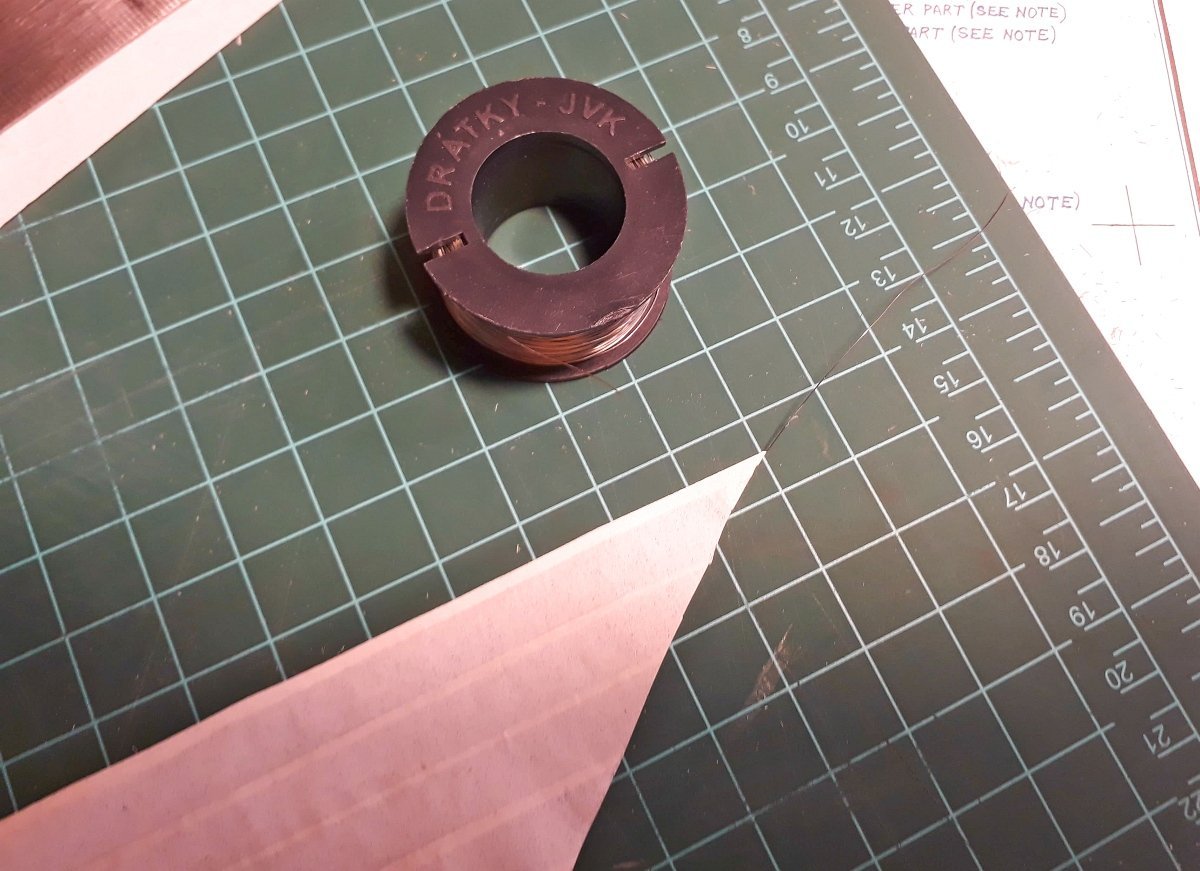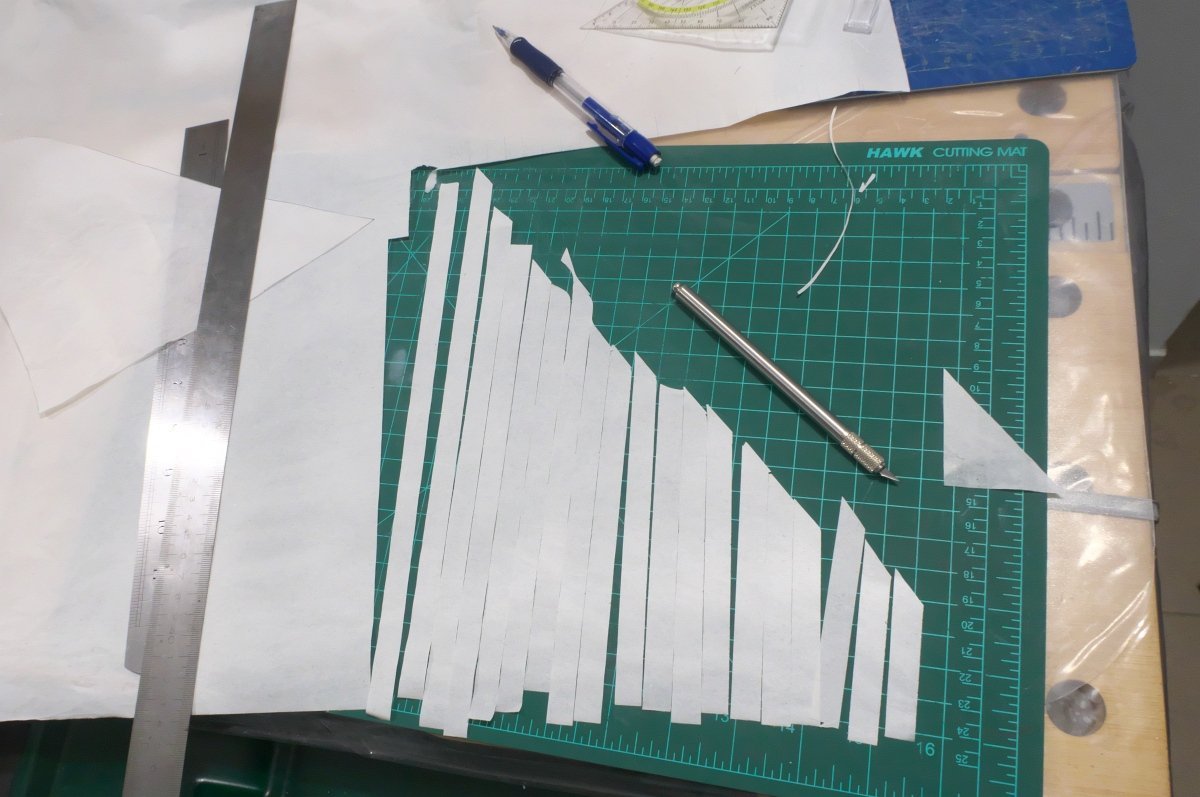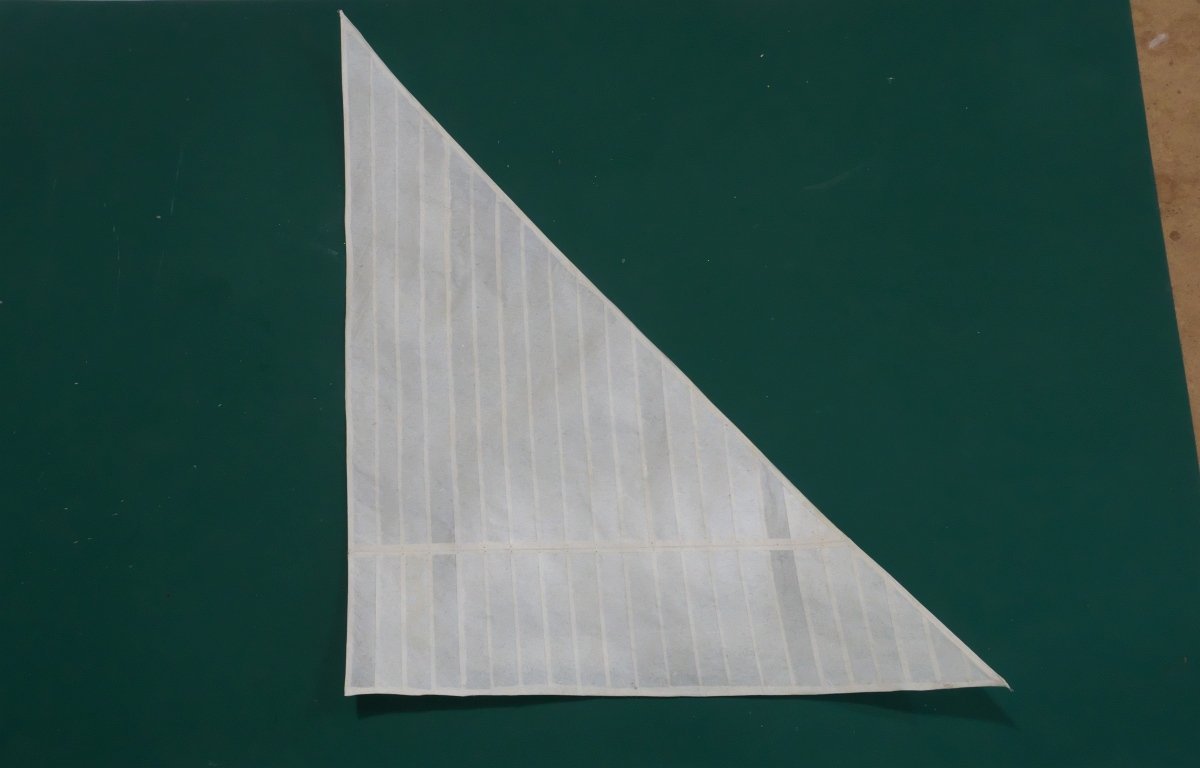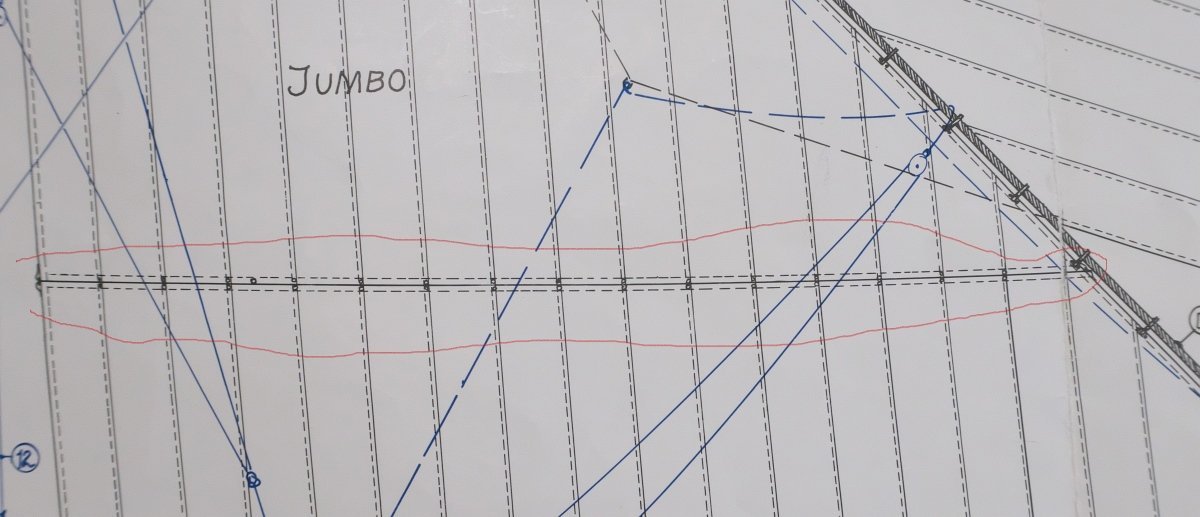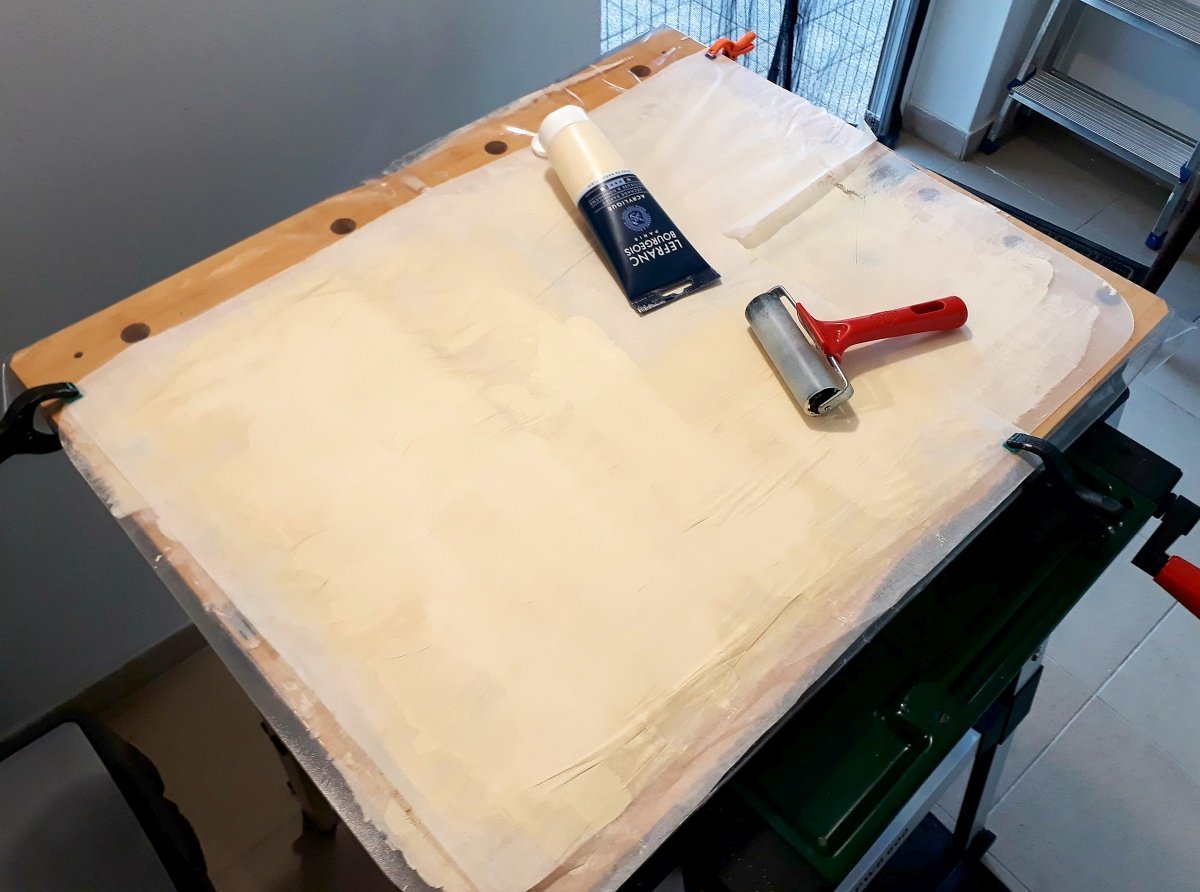-
Posts
249 -
Joined
-
Last visited
Content Type
Profiles
Forums
Gallery
Events
Everything posted by juhu
-
End of the year 2023, just for interest, I guess this project seems to be dead now? Or is there still any REAL hope?
-
Thank you all for kind words. I guess I will now have to take a small pause - new job, some plastic kits waiting to be finished... But got quite a stock of wooden model boxes too, so the plan is to be back for sure with another build.
- 104 replies
-
- Bluejacket Shipcrafters
- smuggler
-
(and 1 more)
Tagged with:
-
- 104 replies
-
- Bluejacket Shipcrafters
- smuggler
-
(and 1 more)
Tagged with:
-
- 104 replies
-
- Bluejacket Shipcrafters
- smuggler
-
(and 1 more)
Tagged with:
-
- 104 replies
-
- Bluejacket Shipcrafters
- smuggler
-
(and 1 more)
Tagged with:
-
Hi all, The story has come to its end, Smuggler is finished. It has been a long, 2 years run, no doubts also because of my lack of experience. I had done many tiring reworks of my faults, right from the hull start to the rigging end and once the whole kit was literally sitting at the edge of a trash bin. Far from perfect result and with bunch of more or less visible errors, I know, but I admit I am very happy with my first finished wooden ship. Am glad I went on with sails. At least to me, heavy rigged ship like this looks much more dynamic and alive with all the sails set. Sure it added quite a lot of work atop and proved to be quite a temptation just to take easier path with, bare masts and gaffs. If nothing else, I can sure understand why these ships were so eye-catching from a distance, but also often so deadly to her crews, because of instability under sudden bad weather strikes and heavy seas. Decision to plank her instead of painting is a clear deviation from historical appearance, but I never could convince myself to hide the beauty of the wood under enamel coat. As for the kit, I am no expert builder and can provide only my personal feelings, rather than comprehensive professional review. Using the vocabulary from the world of plastic models, I would rate it as a good short-run kit. It portraits the subject out of the main stream for rather higher price. No fancy laser cut parts or 3D prints. The 1:1 plans are just great and if they do not cover some details, there comes MSW community and Chapelle’s book “The American Fishing Schooners 1825-1935” to help. Metal castings are of various qualities, I tried to replace them with wooden representation where possible, or at least to paint and weather them to a wooden look. Rigging threads: the “black ones” are OK, those white are …too white to my taste. The thing worth to mention is the dory boat sub-kit. This is a true little gem, I was so pleased with it I wanted to order one more but, alas, overseas postage and customs would multiple the purchase costs, so let it be. I wish the kit was provided as it is, only with a classic POB hull construction or at least the bulwarks were designed in that way. Overall I am very happy with my choice: I feel I have learnt a lot, much more than if everything was made of precut and laser ready-to-use cut parts. This is the greatest benefit for me, although I also only now see, how little craftsmanship I own, when compared to all those detailed and beautiful builds here on MSW – level I could probably never achieve. Overall: I would suggest the kit to a determined first time builder, with some model making experience, one just needs to understand what to expect in the box. Last but not least, I would like to thank for all the support and technical advises I received here on MSW and also to BlueJacket Shipcrafters Inc. for providing a kit of this very fine vessel. And great thanks to my wife. Without her never-ending support and patience I could have never spent so many hours in my workroomJ. I took out my Fuji mirror-less and tried to document the final stage of the project … .
- 104 replies
-
- Bluejacket Shipcrafters
- smuggler
-
(and 1 more)
Tagged with:
-
I really like the look of the deck. It was a good decision not to go with the kit's prescribed deck plate. I have ordered the kit too and am waiting for the box currently, wanted to ask for the historical accuracy: I saw this picture earlier in this thread: https://modelshipworld.com/uploads/monthly_2018_07/Arabia_5m.JPG.dc15dc9f03255c00ebcf94729823bf26.JPG Interesting for me is the planking run direction fore. Was this the special case or should this be a common practice instead of simple straight planks, parallel to keel, on these river steam boats? Thx
-
Hello, another small update. Mackerel pocket booms done and started work on ratlines. Both tasks quite challenging for me, too many rigging obstacles in the way and those ratlines... too many of them even without any other obstacles.
- 104 replies
-
- Bluejacket Shipcrafters
- smuggler
-
(and 1 more)
Tagged with:
-
Hello, Thank you for all the kind words! Another small step forward. All the sails are up there, although not yet fully rigged - must finish some standing rigging work first. After that I guess only a bunch of details is missing: flags, dory lifts, mackerel booms etc. I have just realized I ran out of single blocks - the kit provides enough when building the ship without the sails, but obviously not enough if all the sails are to be set according to plan. I will try to modify some 3rd party blocks to resemble those from the kit as much as possible.
- 104 replies
-
- Bluejacket Shipcrafters
- smuggler
-
(and 1 more)
Tagged with:
-
Hello, just a few quick photos to document current state. With sails being set the access to belaying pins etc. becomes more and more challenging....
- 104 replies
-
- Bluejacket Shipcrafters
- smuggler
-
(and 1 more)
Tagged with:
-
Jib Topsail downhaul / tack - running and attaching
juhu replied to juhu's topic in Masting, rigging and sails
Thanks a lot for all the ideas, double block installed. -
Hi allanyed, thanks for encouraging words. But here actually my attempt to make my own ropes was a step aside. Simply said, the result of my own made rope work so far is good to me i.e. for a very thick rope like anchor rope visible on the deck in the pics above. But when I tried to make thinner ropes, I found, that although the structure of such self made rope is superior to the kit or commercial supply, I felt that it simply does not match to scale and is too prominent. Something like heavy rivets or deep panel lines on some plastic kits - not everything can be scaled down from the original. So the standing rigging will be either kit supply or 3rd party ropes, but running rigging I replaced fully. The kit supply here was made of white-colored thread that would need to be tanned somehow or would be suitable for a modern yacht maybe. Still I wonder if I get help with this technical realization query - how shall I run the topsail rigging to have it historically correct or I will do it "somehow" with hope of not being very far from correctness. Edit: Ah, just have got an answer in rigging section, the community here is really great!
- 104 replies
-
- Bluejacket Shipcrafters
- smuggler
-
(and 1 more)
Tagged with:
-
Hi all, thanks for all the likes. (I would rather not mention, that I torn off all the standing rigging, yes, I did it again , I did not like the result, the lines were too thick, self made ropes looking interesting, but I felt the rope structure is not OK for the scale then. Nevertheless, all is now reworked and bowsprit fully rigged with kit supplied threads, happy with the result and proceeding further) I would like now to ask for a help with one tiny technical detail, if you could help how to proceed, would be very helpfull I posted the full detailed question also here, thinking it may be useful in general. Thank you!
- 104 replies
-
- Bluejacket Shipcrafters
- smuggler
-
(and 1 more)
Tagged with:
-
Good day again, am back with my BJ's Smuggler build and another question that may be interesting also in general, so posting it here and asking kindly for a help. I have studied kit instructions, Chapelle's American fishing schooners, Patersson's For and Aft rigging, but have not found the answer: As I understand, there are two lines concerned here, green downhaul, attached to the jib topsail top corner that would serve to pull the sail down and tack rope (red) that fixes to sail lower corner. According to kit instructions, both lines then travel aft to the bitts (In the pic above, you see them marked in circled nr. 1. and 3.). My question is, how is done the "fixing point" marked with blue questionmarks? For a downhaul, there would be a block naturally, but what about tackle? Was there another block or was the line somehow just put through some eyelet? Or shall I use a double block with one hole for downhaul, the other for a tack? As you see, the plan is not very clear here and written instructions says only that it is "self explaining" from the plan, which for me is not unfortunately. As you see, the jumbo and flying jib do not have this questions, since their lower corner is simply attached to the stay. Thank you for any ideas.
-
Hello, I have started with "upper floors" as promised. Rising the masts was not so difficult, more thoughts I spent on "workflow" for the sails and rigging: This is my first model and I did not want to attach something at the beginning, that would create nasty "accessibility" problem at the end. Will see only later, if something was not forgotten. Standing rigging was again quite a challenge for me. I have studied various Smuggler's builds and other models too, still was a bit reluctant when it came to a thread thickness. Seems like as many modellers, as many interpretations. Fortunately BlueJacket provides very detailed rigging size table, big kudos for that! However there are only 4 thread sizes for standing rigging included in the kit. I tried to make some reasonable approximation. When needed, used 3rd party threads and also made several ropes using the rope maker. But only when I felt it would make sense: on thicker threads like stays and main shrouds. One head scratching item for me was jumbo stay. It is the thickest part of standing rigging and even when I made it as closely to scale as possible, it looks well, quite prominently let's say. But it matches the plan scale instructions, hopefully the final result will not be too bad and oversized at the end...
- 104 replies
-
- Bluejacket Shipcrafters
- smuggler
-
(and 1 more)
Tagged with:
-
Greetings, am back again after a while. Had some accordion to tune and also sail making proved to be quite challenging work with very uncertain results for me. But here they are, done. Thanks to the wired lining and clear lacquer the sails preserve the desired bulged shape quite well. Weathered only very gently to achieve just off-white creamy shade. I guess I will make some ropes now and then carry on rising the masts etc....
- 104 replies
-
- Bluejacket Shipcrafters
- smuggler
-
(and 1 more)
Tagged with:
-
Thank you for the answer Nic. I think I will make it then somehow - probably leave it in the current state. In the meantime few more shots from the work in progress: Jib sail is being completed: Jib Topsail is being glued together: And main body done, well, actually its first half only: Ok, I will put the camera aside for a while and will come back once all the sails are done...
- 104 replies
-
- Bluejacket Shipcrafters
- smuggler
-
(and 1 more)
Tagged with:
-
Thank you Allan for kind words. Although am not sure I deserve them. This project is my first wooden ship build and I still learn a lot. As you see I took many wrong paths and returning back to the right way was sometimes very frustrating. As for the sails, I made and scrapped two jibs trying to simulate the joins using pencil, but did not like the result. Eventually I took the inspiration from here, which is where the credit shall go for sure: I like the look of the sail, although I feel the panel overlap should be even narrower to fit the scale, but here I meet the limits as gluing paper strips together with so little attaching surface is tricky for me and also the final sail shall have some durability. Still it is not that much wide compared to plans, so I hope the final result will be fine. Now the sail is slightly weathered and matt-lacquered, will post pics later when more sails are available. Thank you all for all the support.
- 104 replies
-
- Bluejacket Shipcrafters
- smuggler
-
(and 1 more)
Tagged with:
-
Jumbo sail "construction" detail question
juhu replied to juhu's topic in Masting, rigging and sails
Thanks a lot for all the answers. I have contacted MrBlueJacket with the question. The post with pics for bonnet lacing is very informative and somehow it corresponds with Chappelle's American Fishing schooners book. It seems as I suspected that line of eyes for lacing should be much thicker, with smaller distances that anticipated in plans, at least it seems to me so. Also I have to ask myself if it makes sense to represent this lacing - rope structure is quite complicated in reality and it may easily result in overdone appearance. But I learnt here again very interesting things and thank you for that. -
Jumbo sail "construction" detail question
juhu replied to juhu's topic in Masting, rigging and sails
Thanks for the hint! I have found few notes on bonnet in Chappelle, p. 354 now. Although not very conclusive ( seems that exact lacing pattern is not known) still helps to understand a bit. -
Hello working further on sail and elaborating little bit. The previous pic posted was not the right way at the end :-/. The color was too yellowish to my taste and also I could not get the surface smooth enough. So scrapped and took some spray can this time, sticking with white color. The spray creates much better looking surface and thanks to its opacity, the slight color variation does look quite convincing to me. After several attempts and with the hints from other thread I found here I started to build the jumbo sail from separate evenly cut strips. Tedious but rewarding at the end hopefully. Sail edges strengthened with very thin wire. Shall help with shaping and add some durability I hope. So far quite happy with the result? I came to one open point here though, if you could help, would be grateful. Thanks
- 104 replies
-
- Bluejacket Shipcrafters
- smuggler
-
(and 1 more)
Tagged with:
-
Hello, while dealing with jumbo sail preparation I came across this detail I cannot understand / resolve. It seems that the sail is like horizontally divided in 2 pieces. The marked line truly does not seem just like some strengthening canvas. I have not found this on any other model or googled picture. What would be the purpose? Even much larger main sail does not feature any necessity for being constructed like this. Then of course, if you check the second zoomed picture, you see that both parts of the sail have the line of eyes like if they were to be stitched together. But there is no rope, no metal pin, nothing that would be inserted in those eyes. Above all, at the aft edge of the sail, there seem to be like some another strange teardrop shaped things/hinges - purpose of whose also is not clear to me. If you have any ideas how this is supposed to work, whether I shall bind the sail part somehow together, which is not shown in the plans, or truly is ok to leave the eyes in the sail empty, any help is welcome!. Thank you.
-
Another very small step up. I have started to prepare sail cloth by coloring the tissue paper and following the web courses. As always, it looks much easier in the video than it really is, but lets see how it shows. I am trying to finish as much sub steps as possible before final assembly knowing that once all the masts and booms are placed, my whole work desk will be blocked with the model.
- 104 replies
-
- Bluejacket Shipcrafters
- smuggler
-
(and 1 more)
Tagged with:
About us
Modelshipworld - Advancing Ship Modeling through Research
SSL Secured
Your security is important for us so this Website is SSL-Secured
NRG Mailing Address
Nautical Research Guild
237 South Lincoln Street
Westmont IL, 60559-1917
Model Ship World ® and the MSW logo are Registered Trademarks, and belong to the Nautical Research Guild (United States Patent and Trademark Office: No. 6,929,264 & No. 6,929,274, registered Dec. 20, 2022)
Helpful Links
About the NRG
If you enjoy building ship models that are historically accurate as well as beautiful, then The Nautical Research Guild (NRG) is just right for you.
The Guild is a non-profit educational organization whose mission is to “Advance Ship Modeling Through Research”. We provide support to our members in their efforts to raise the quality of their model ships.
The Nautical Research Guild has published our world-renowned quarterly magazine, The Nautical Research Journal, since 1955. The pages of the Journal are full of articles by accomplished ship modelers who show you how they create those exquisite details on their models, and by maritime historians who show you the correct details to build. The Journal is available in both print and digital editions. Go to the NRG web site (www.thenrg.org) to download a complimentary digital copy of the Journal. The NRG also publishes plan sets, books and compilations of back issues of the Journal and the former Ships in Scale and Model Ship Builder magazines.




